Before I visited Dubai, I wasn’t sure if it would be my kind of place. A city built on oil wealth, where shopping malls double as amusement parks and luxury is the default setting? It sounded more like an expensive stopover than a destination worth exploring.
But I went anyway. And whether or not Dubai is worth visiting depends entirely on what you’re looking for.
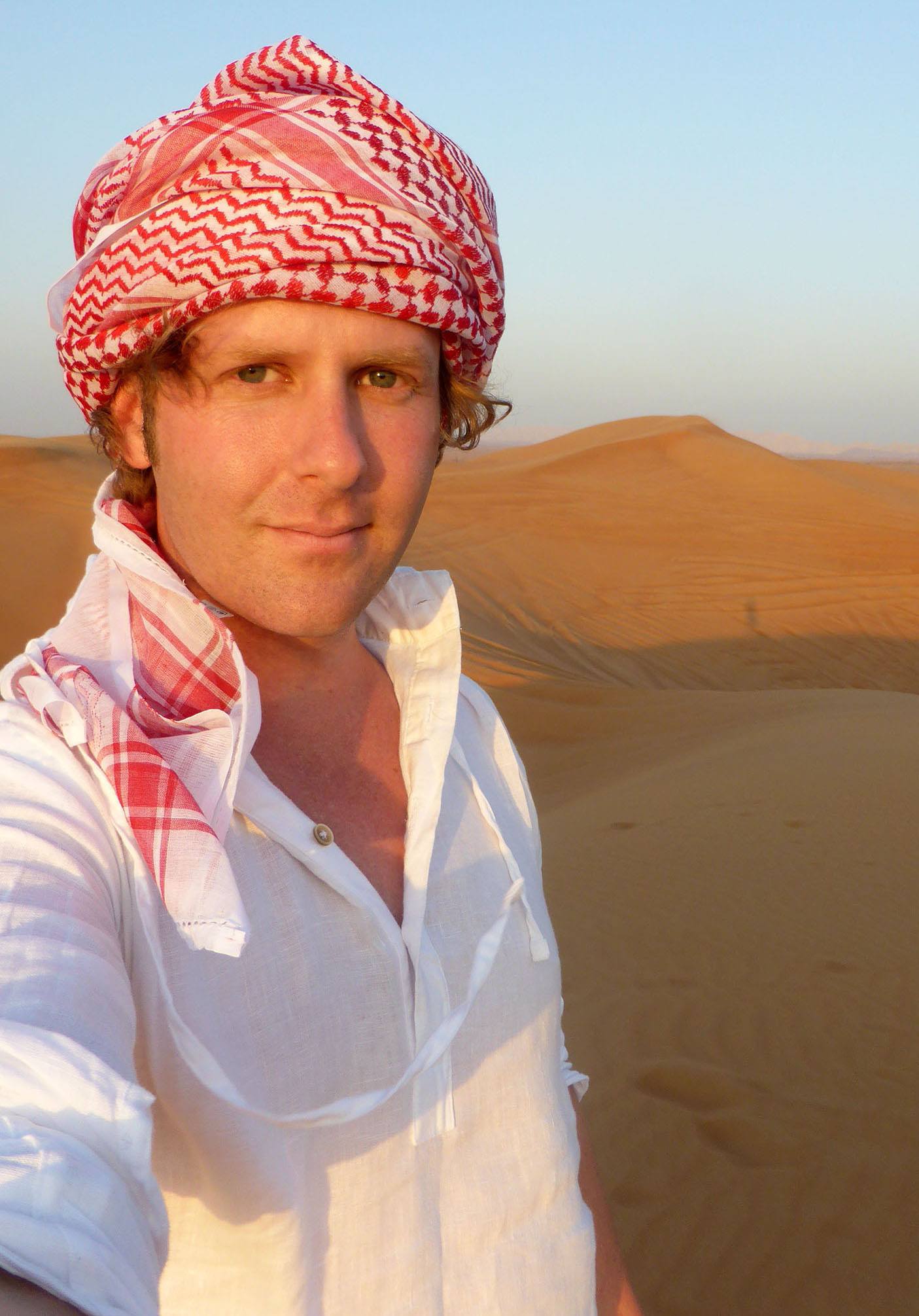
If you love modern marvels, high-end experiences, and a meticulously curated cityscape, Dubai delivers.
The world’s tallest building? Check.
A man-made island shaped like a palm tree? Of course.
A desert safari followed by dinner under the stars? Absolutely.
But if you're after history, authenticity, and cultural depth, Dubai might leave you feeling like you’ve stepped into a theme park version of the Middle East — polished, extravagant, but somewhat lacking in soul.
As a budget traveller, I found Dubai challenging. Prices are high, and while there are ways to experience the city without breaking the bank, they don’t always feel like the "real" Dubai.
So, is Dubai worth visiting? Maybe. It all depends on what you want.
Let me break it down.
Disclosure: This article contains affiliate links. If you make a purchase through these links, I may earn a small commission at no extra cost to you. Thank you for supporting my blog!
Is Dubai Worth Visiting? Here's What I Really Think
Before I visited Dubai, I wasn’t sure what to expect. The city is often portrayed as a futuristic metropolis — a place of towering skyscrapers, luxury shopping, and extravagant experiences. But I’d also heard the other side of the argument: that Dubai is artificial, overpriced, and lacking the depth of more historic destinations.
But was there substance beneath the spectacle? Is Dubai worth visiting?
For me, the answer is maybe — depending on what you’re after.
If you love luxury, high-end shopping, and polished experiences, you’ll probably love it. If you’re looking for deep culture, walkable neighbourhoods, and budget-friendly travel, you might find it lacking. Dubai is impressive, but it often feels more like a grand display of human ambition than a place with a strong identity of its own.
That said, I did find moments of genuine awe — standing atop the Burj Khalifa as the city twinkled below, watching the desert shift to gold at sunset, and eating my way through the city’s hidden pockets of authentic food.
So, is Dubai worth visiting? It depends on what excites you about travel. Let’s break it down.
Pin this article for future reference!
Why Dubai Might Be Worth Visiting
Dubai might be worth visiting if you’re drawn to architectural marvels, luxury experiences, and the sheer spectacle of human ambition. From the record-breaking Burj Khalifa to desert adventures and an evolving food scene, the city delivers on grandeur — though whether that’s enough depends on what you seek in travel.
A Spectacular Skyline
Dubai’s skyline is a feat of human ambition, where glass, steel, and sheer audacity stretch toward the sky.
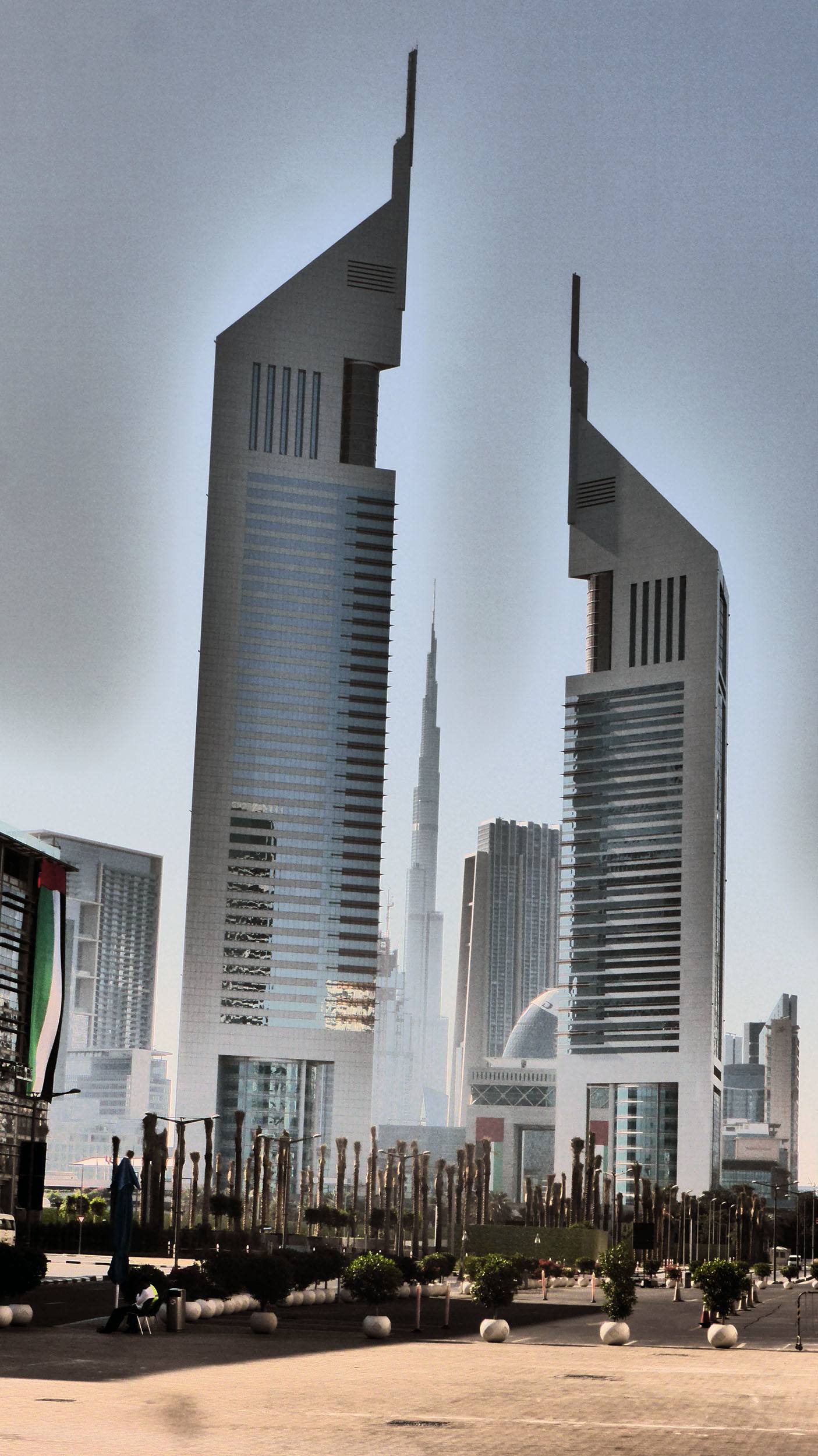
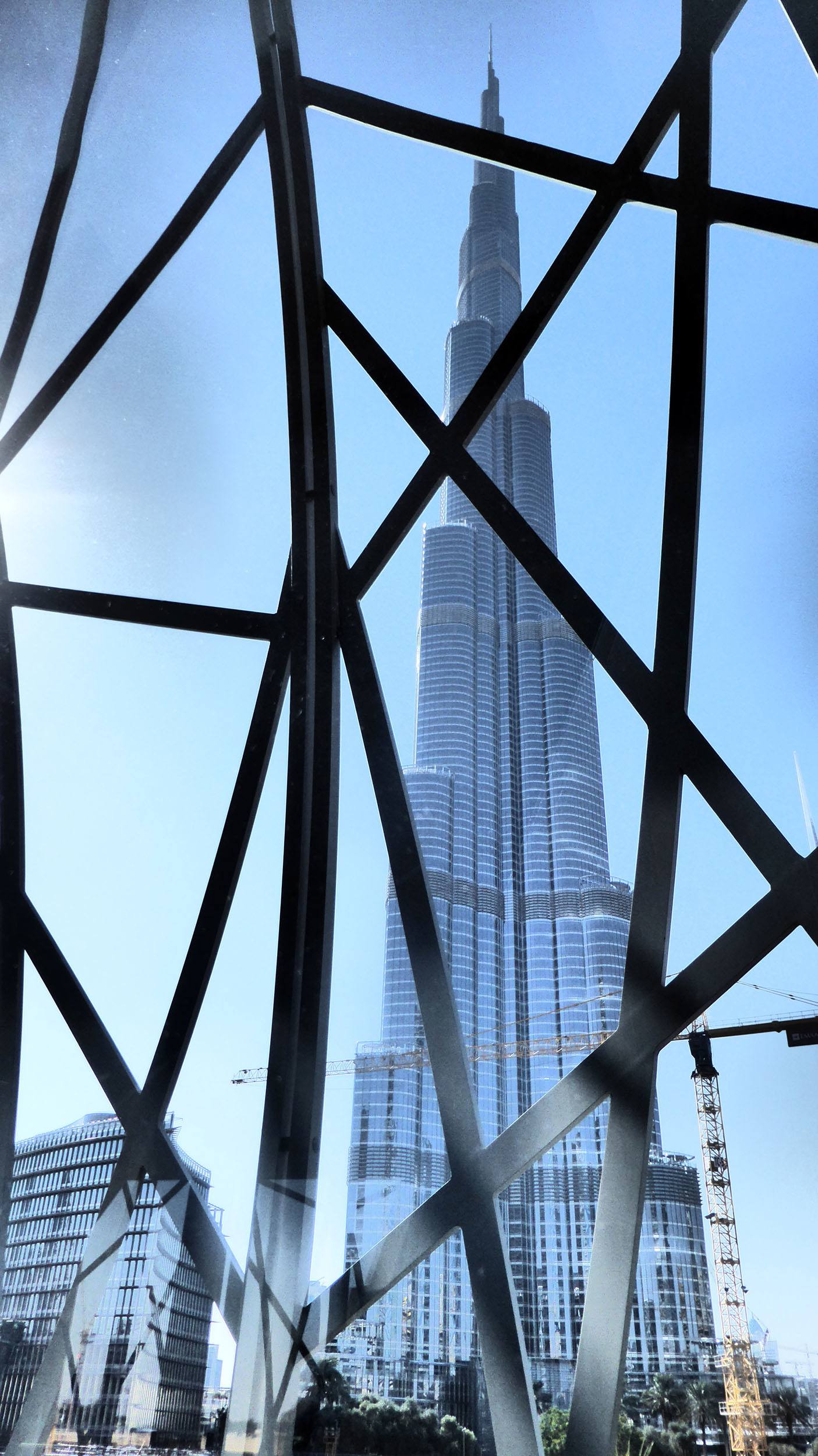
The crown jewel, of course, is the Burj Khalifa — an opportunity to stand on top of the world (unless you’ve summited Everest). At 828 metres, it dominates the cityscape, visible from nearly five kilometres away. Housing restaurants, offices, and even an Armani hotel, it’s a definite tick-list item for any visitor.
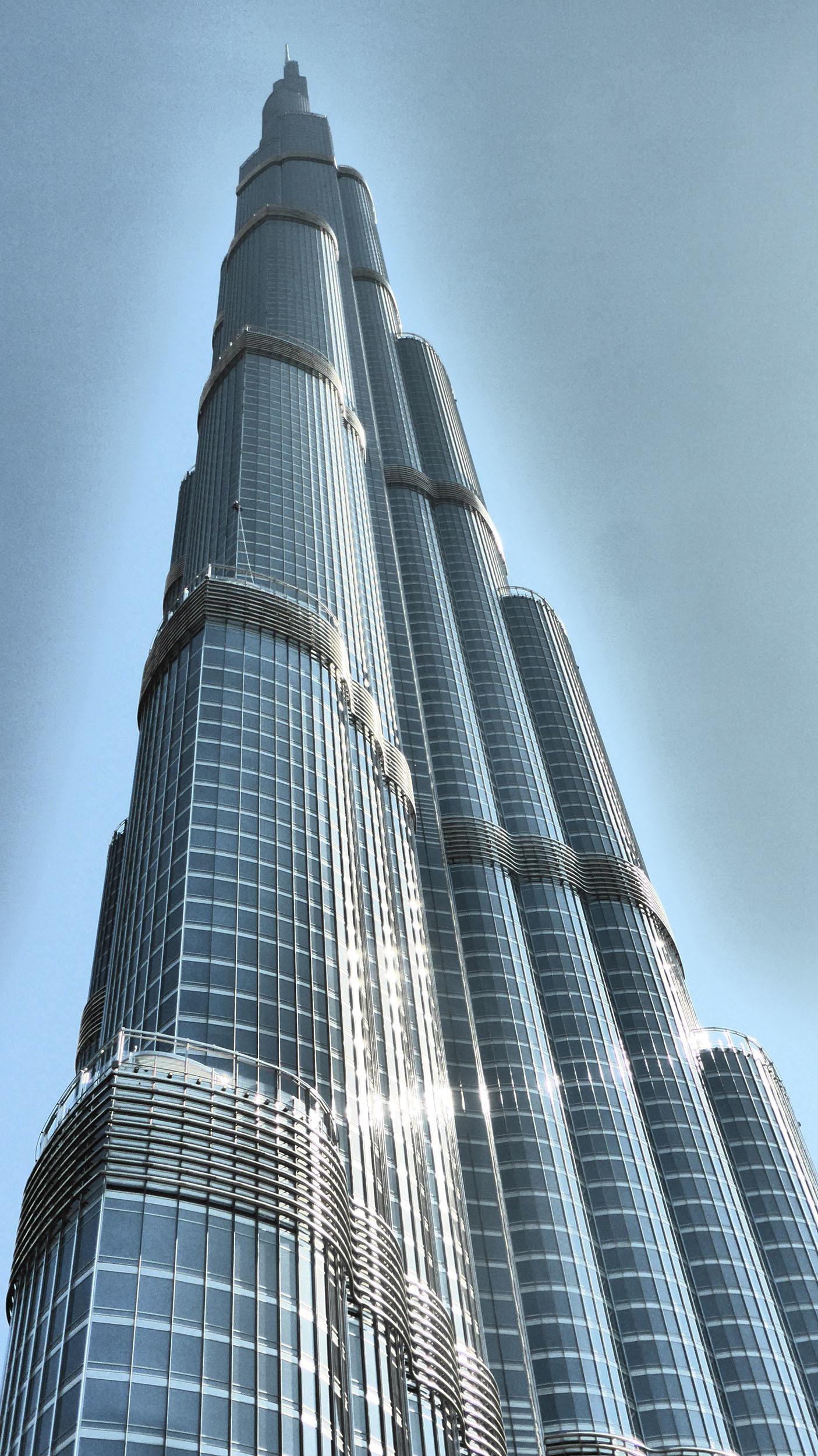
I visited the observation deck on level 148 at dusk, watching as the city transformed beneath me. The golden glow of sunset gave way to a glittering web of lights, the skyline shifting from day to night in an effortless, almost choreographed, transition. It was a reminder that Dubai isn’t just about luxury — it’s about spectacle.
Beyond the Burj, Dubai Marina offers another striking vantage point, where high-rises reflect off the water, and rooftop bars provide uninterrupted views of the city’s illuminated grandeur. Whether you’re admiring the skyline from a skyscraper or simply gazing up from the streets below, Dubai ensures you never forget just how high it aims.
Desert Adventures Just Outside the City
To truly appreciate the sheer audacity of Dubai’s existence, you need to step outside of it.
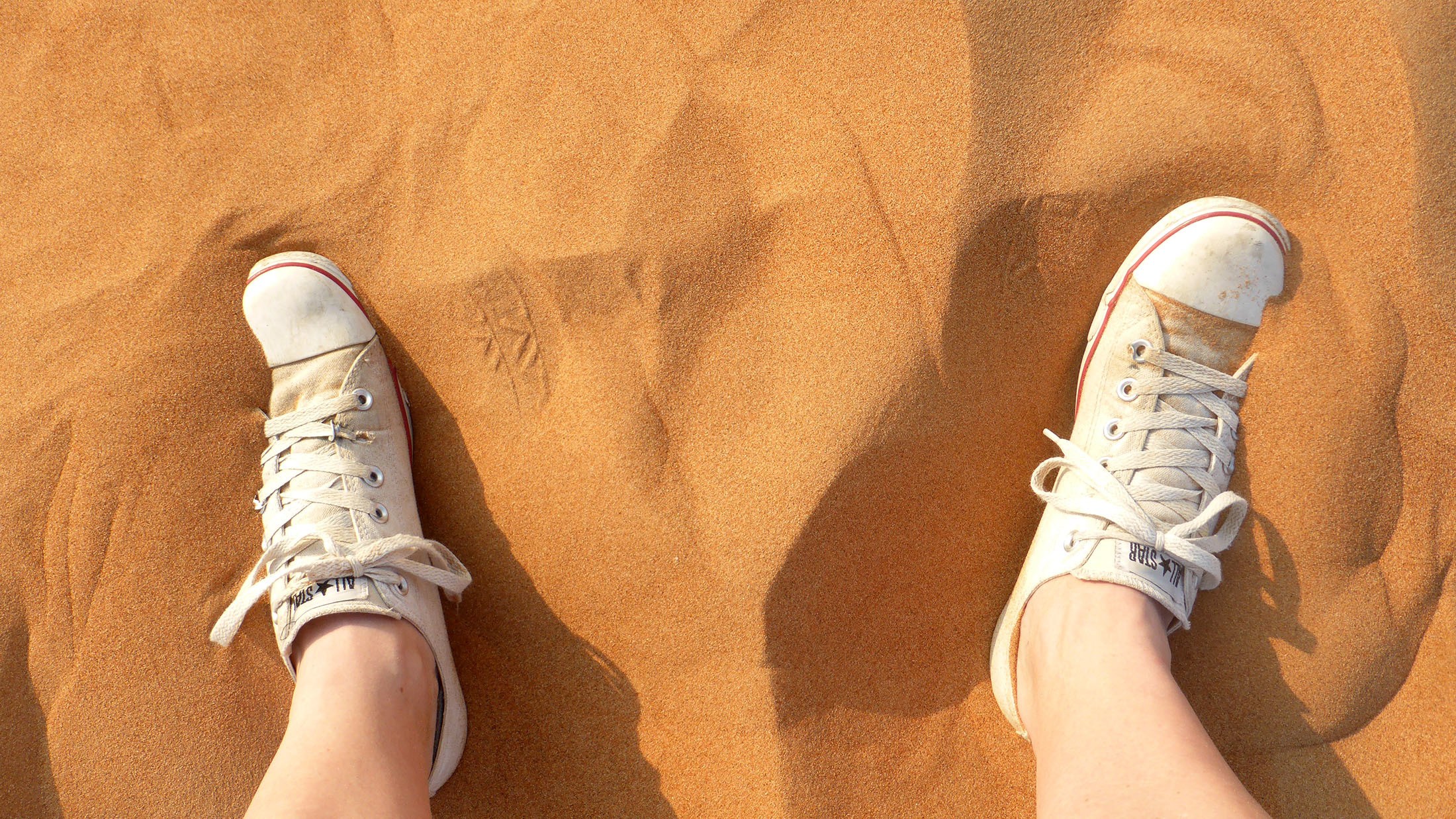
Just beyond the city’s futuristic skyline lies an entirely different world — one of rolling dunes, shifting sands, and a silence so vast it swallows the city’s hum in an instant.
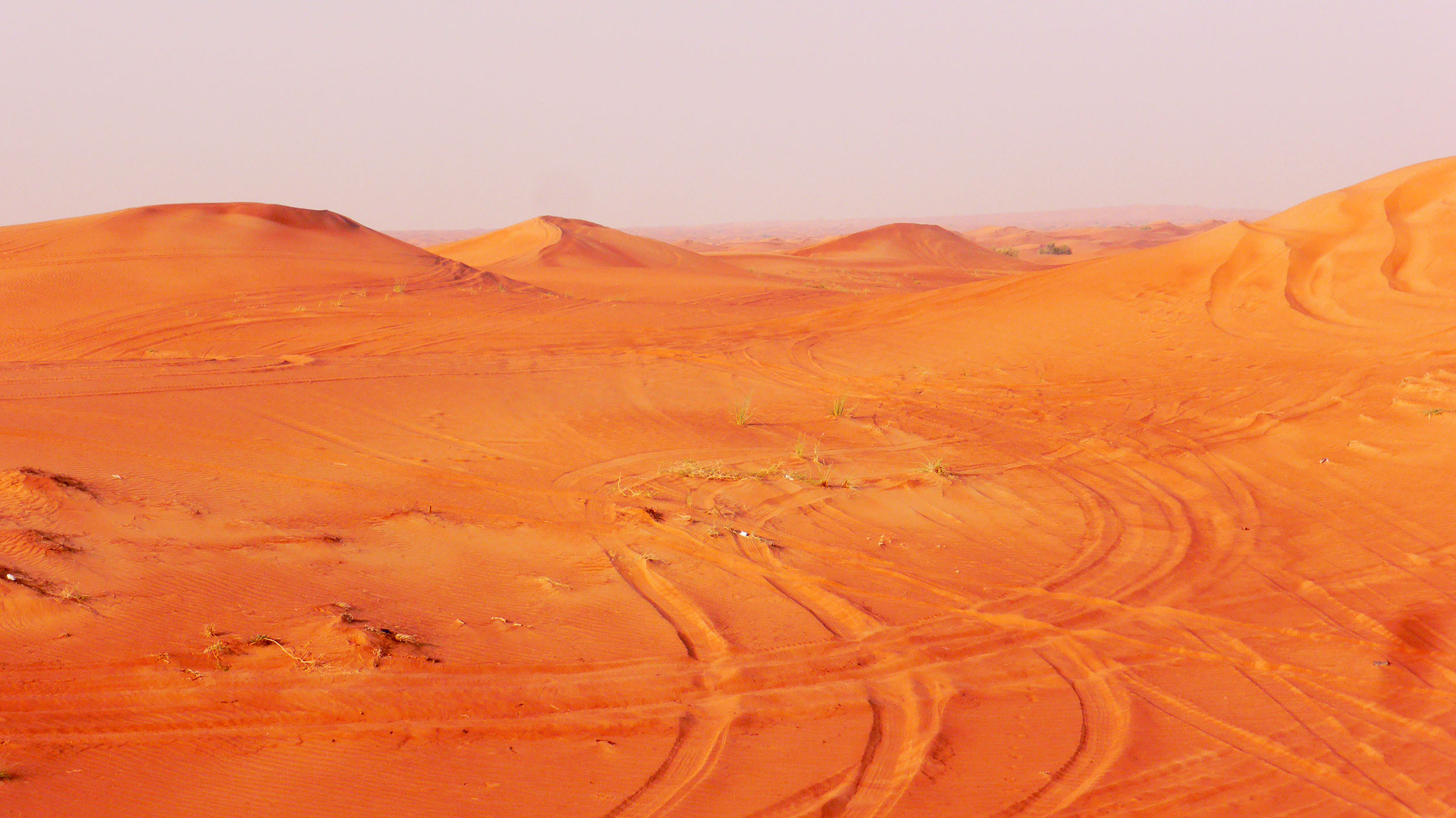
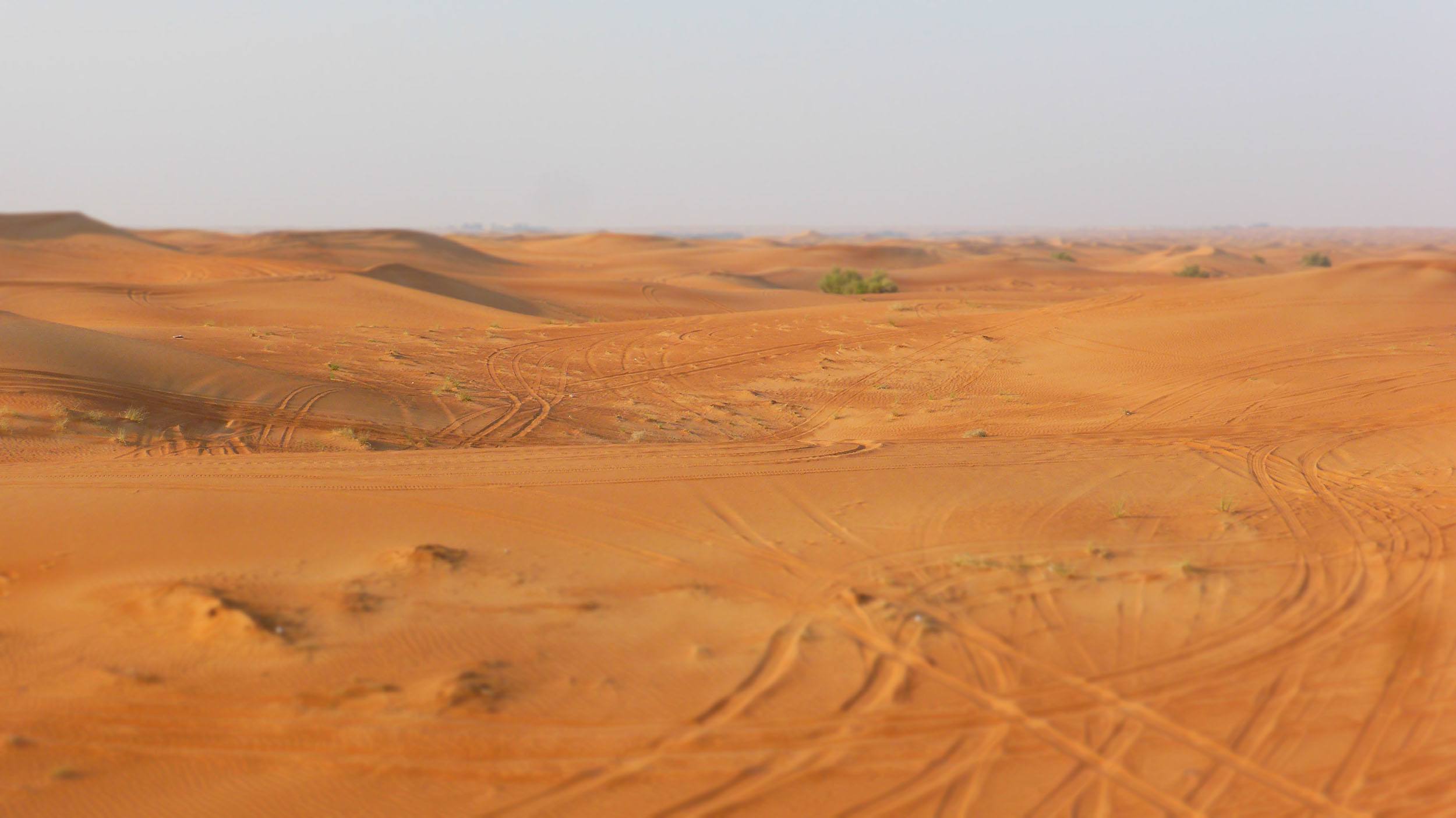
A desert safari isn’t just a scenic drive — it’s an adrenaline rush disguised as a sightseeing tour. Strapped into a 4x4, I found myself gripping the seat as our driver expertly navigated the dunes, sending the vehicle teetering on the edge before plunging down near-vertical slopes. The thrill was undeniable, a rollercoaster ride engineered by nature.
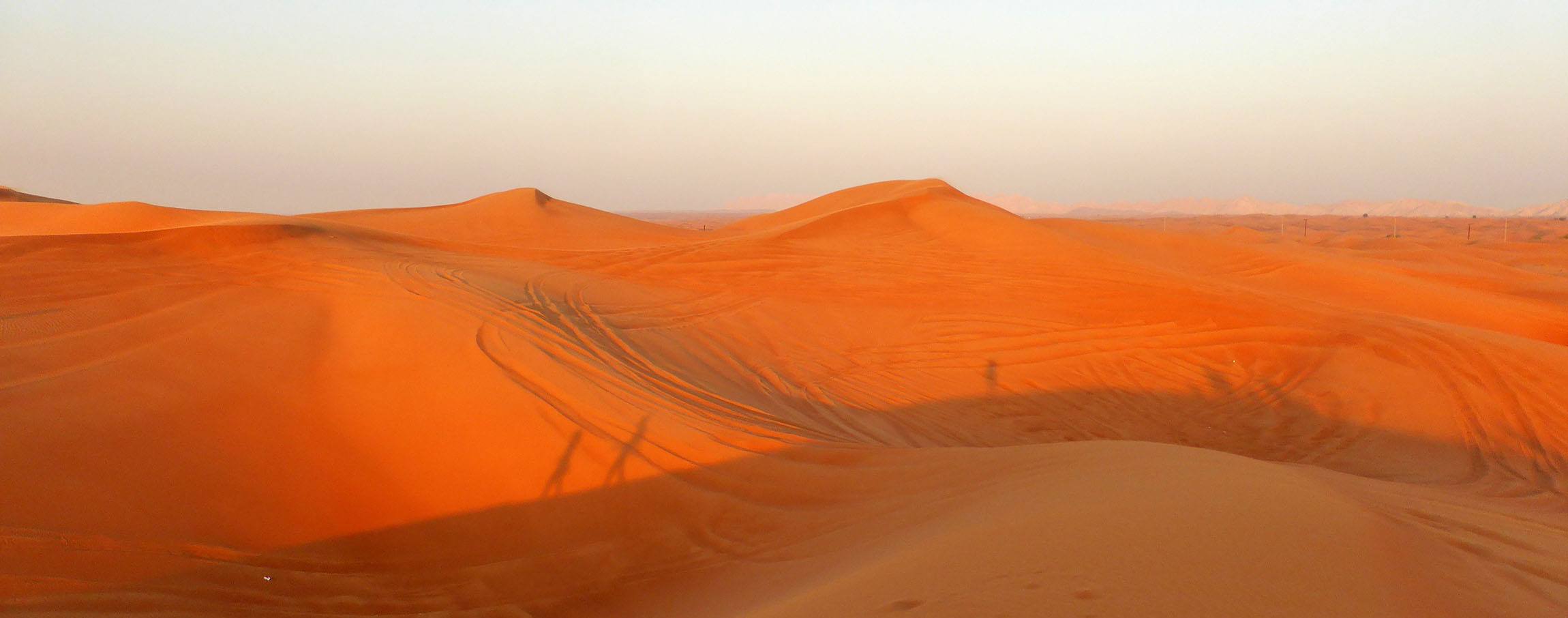
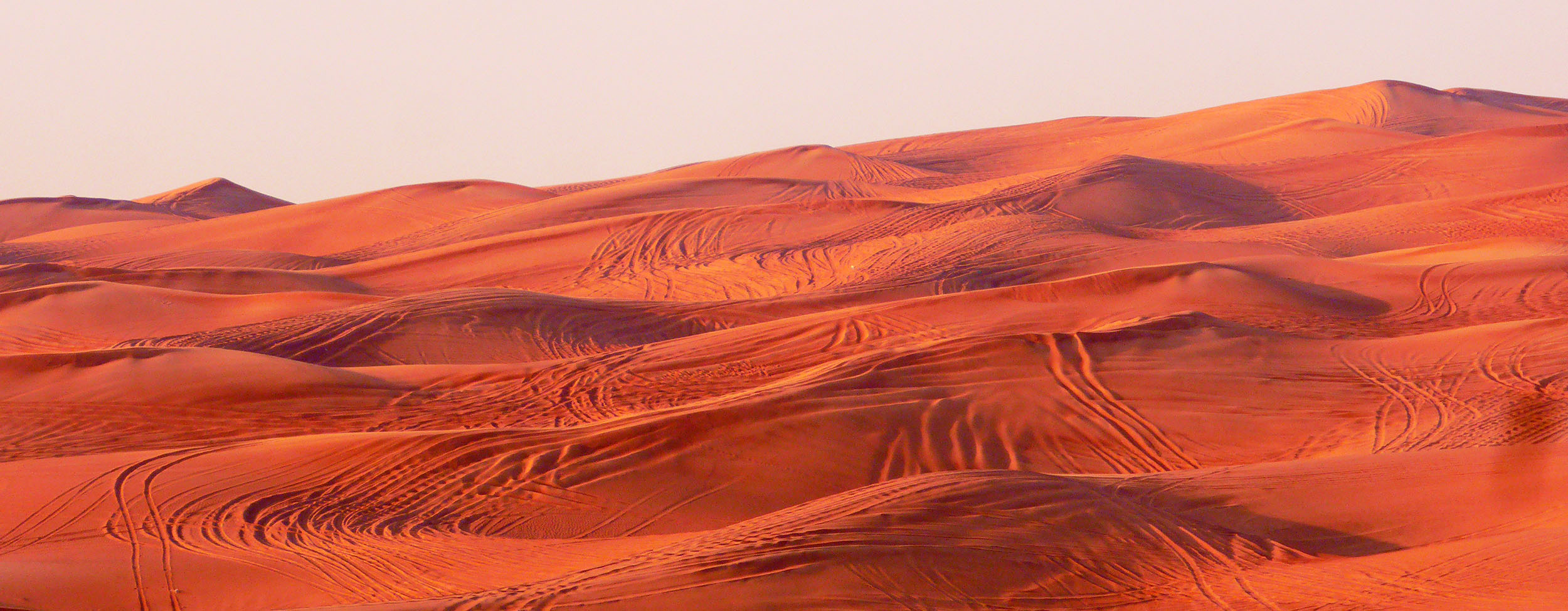
But the real magic happens when you trade four wheels for four smaller ones. Quad biking across the dunes is a different kind of exhilaration — one where you control the ride, carving your own path through the golden expanse. The wind rushes past, the sand kicks up behind you, and for a brief moment, it feels like you are the only person in the world.

As the sun dipped lower, the landscape transformed. The honey-hued sands deepened to burnt orange, then crimson, until the entire desert glowed under the fading light.
At a Bedouin-style camp, I settled in for the evening — freshly grilled meats, rhythmic drumbeats, and the distant scent of shisha lingering in the air.
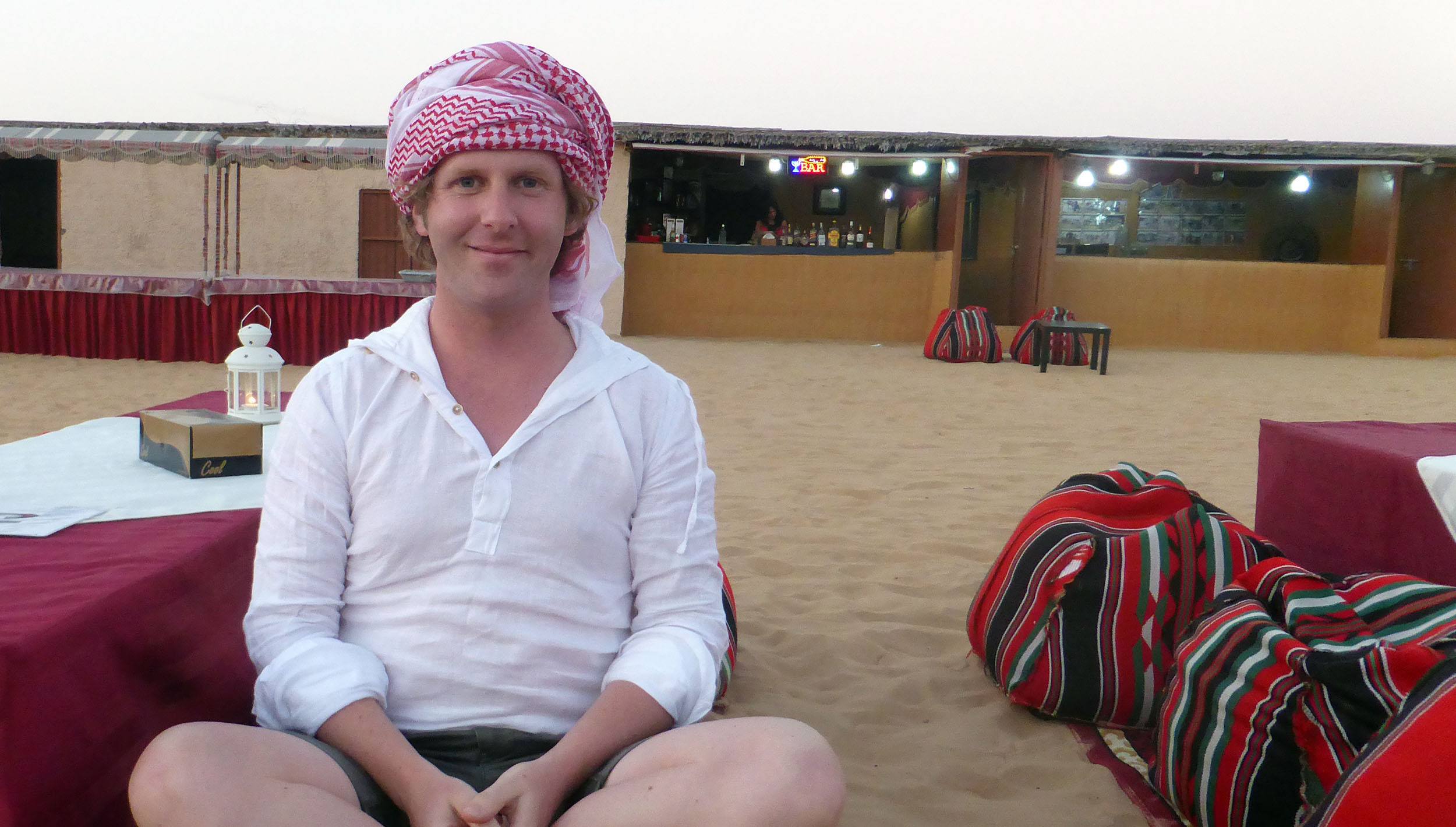
It was a fitting contrast to the glitzy opulence of Dubai, a reminder that beyond the city’s luxury, a wilder, older world still remains.
Extravagant Shopping and Entertainment
Dubai doesn’t do subtle. Everything here is designed to impress, and its shopping and entertainment scene is no exception.
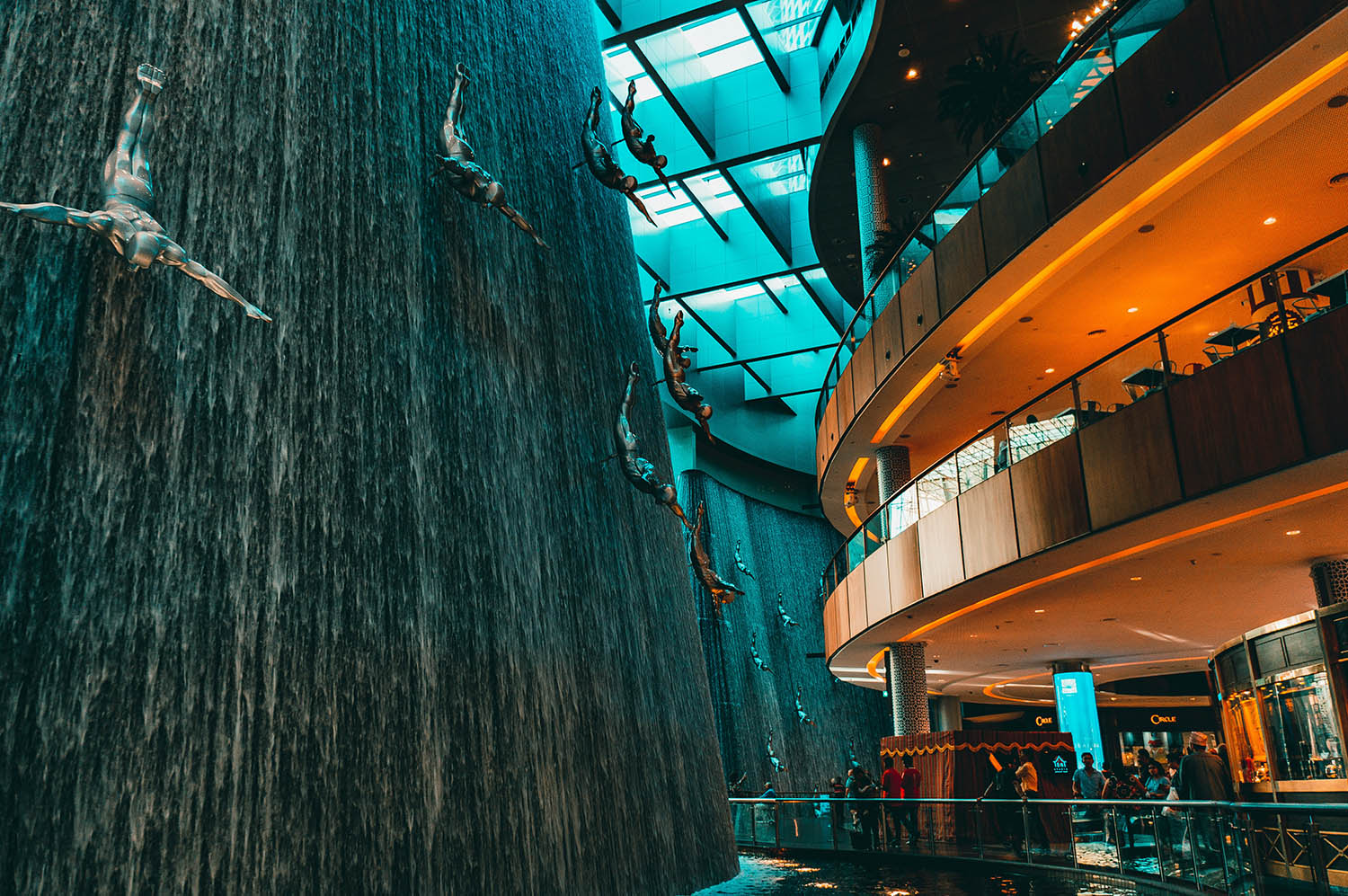
Take Dubai Mall, for example. It’s not just a mall — it’s a world of its own.
Spanning an area equivalent to 50 football fields, it houses more than just high-end fashion stores. There’s a full-sized ice rink, an indoor waterfall, and an aquarium so vast that you could mistake it for a marine park.
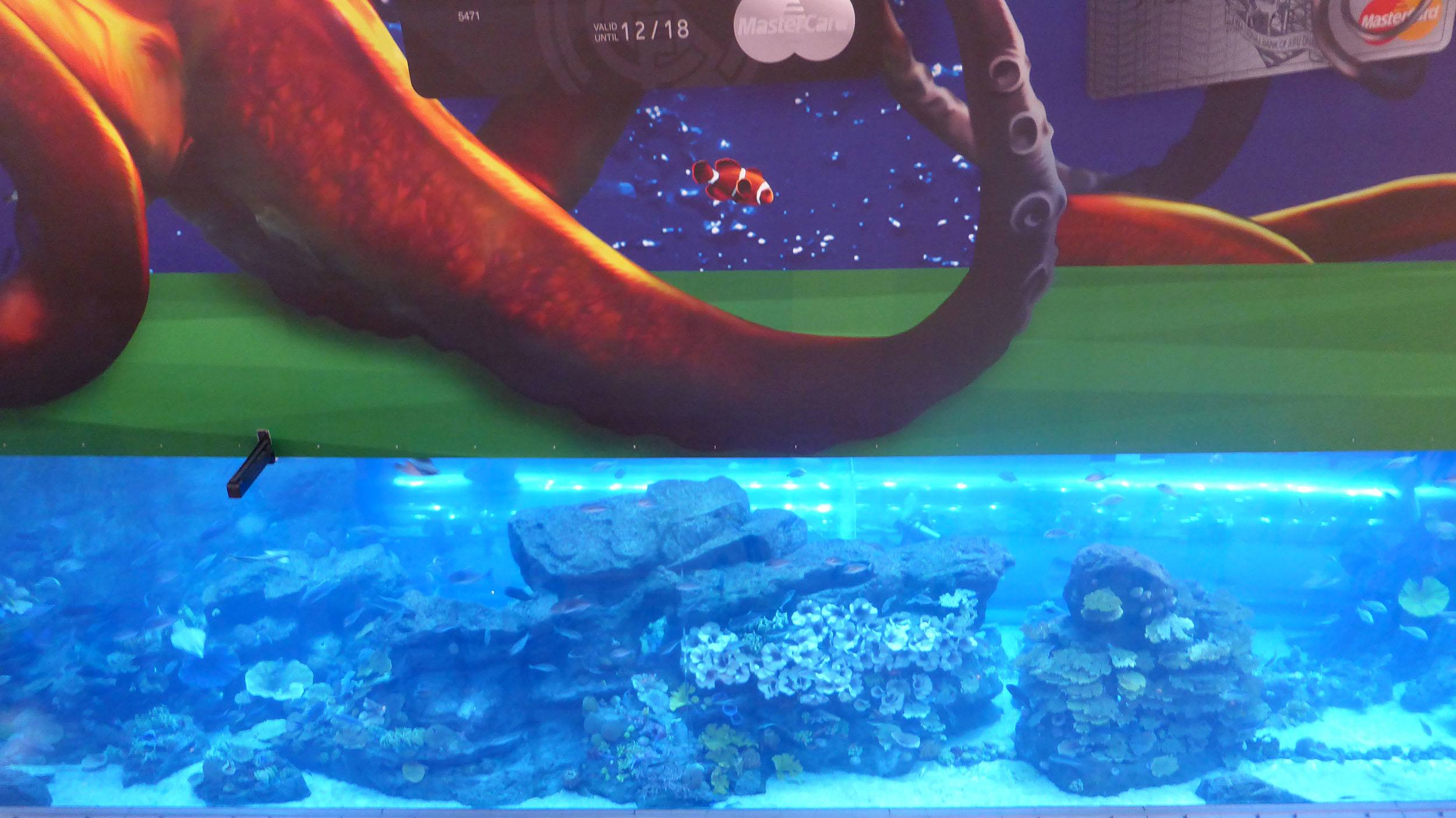
I spent half a day there, wandering past designer boutiques I couldn’t afford, pausing to marvel at the sheer spectacle of it all.
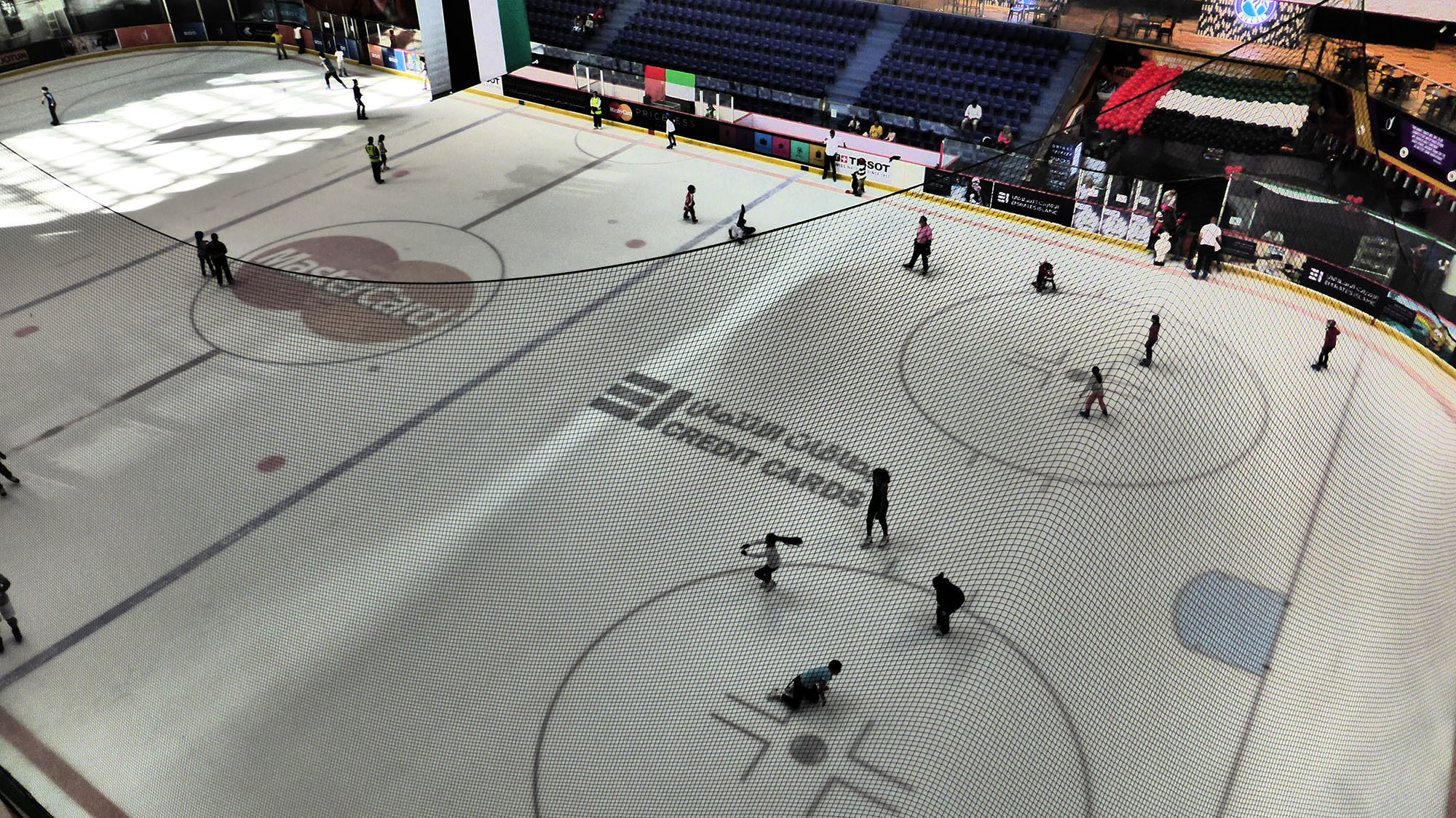
Even with an extended lunch break, I barely scratched the surface.
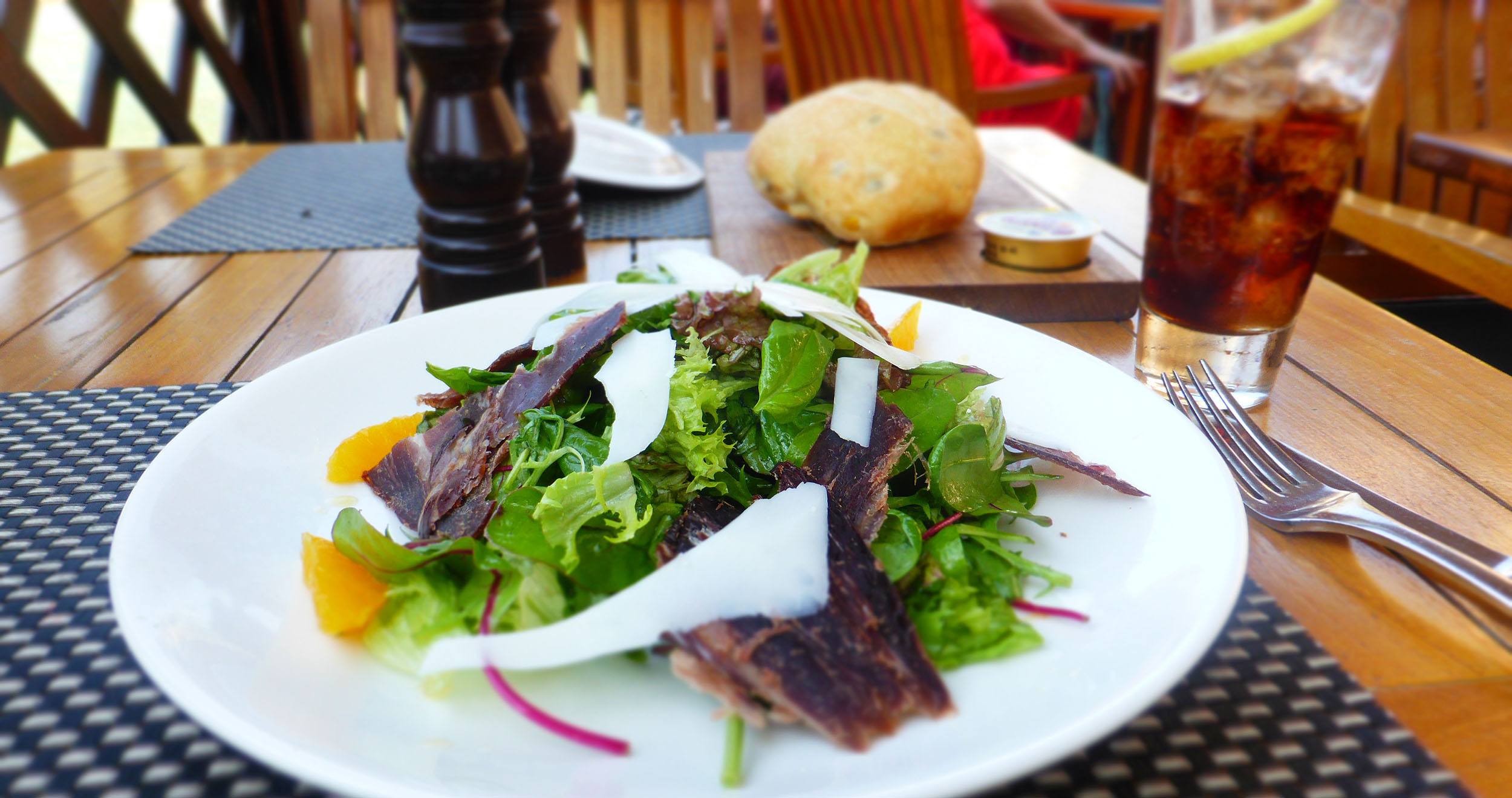
For something with a little more old-world charm, I ventured into the souks.
The Gold Souk was a dizzying display of excess — rows upon rows of gleaming jewellery, some pieces so oversized they looked more like museum artefacts than accessories.
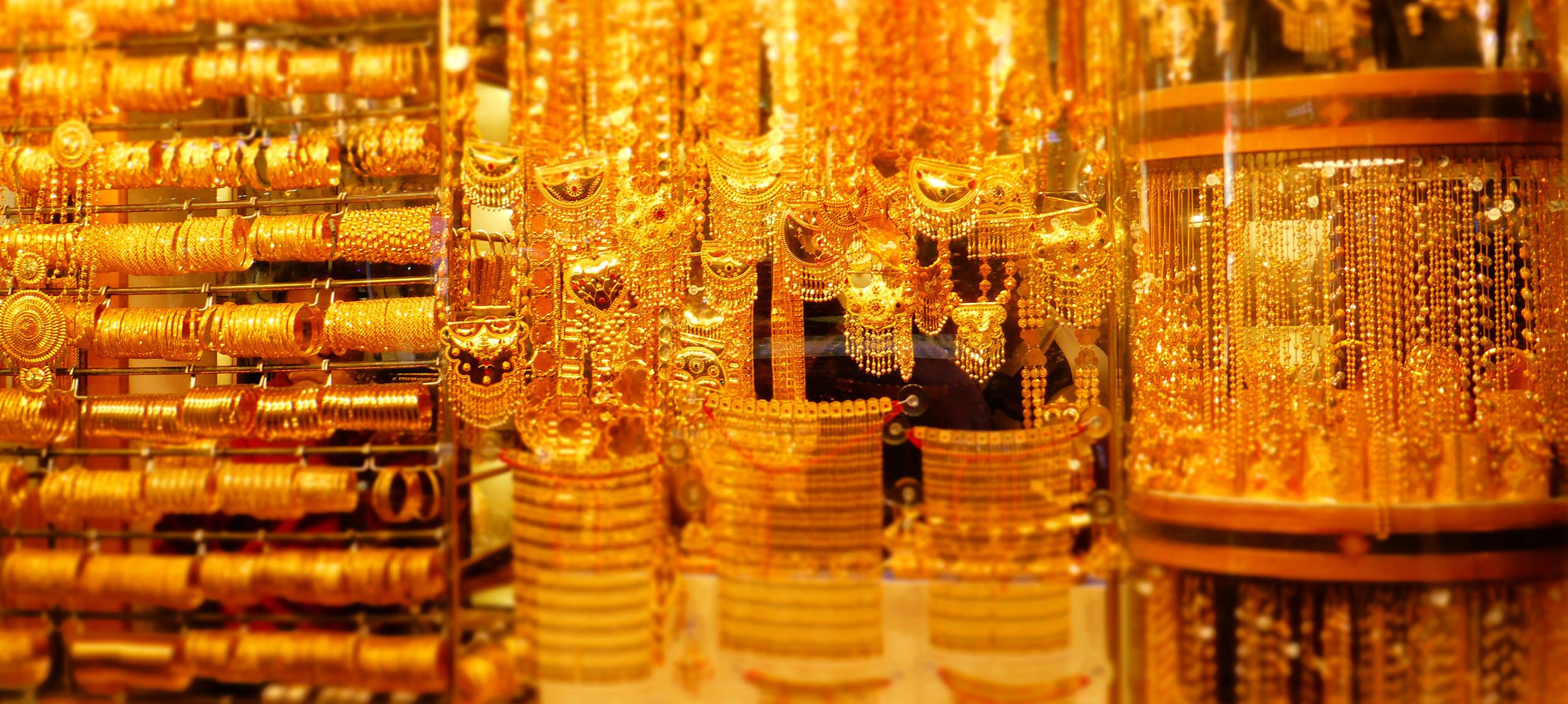
I didn’t buy anything, but it was a fascinating glimpse into the city’s obsession with luxury.
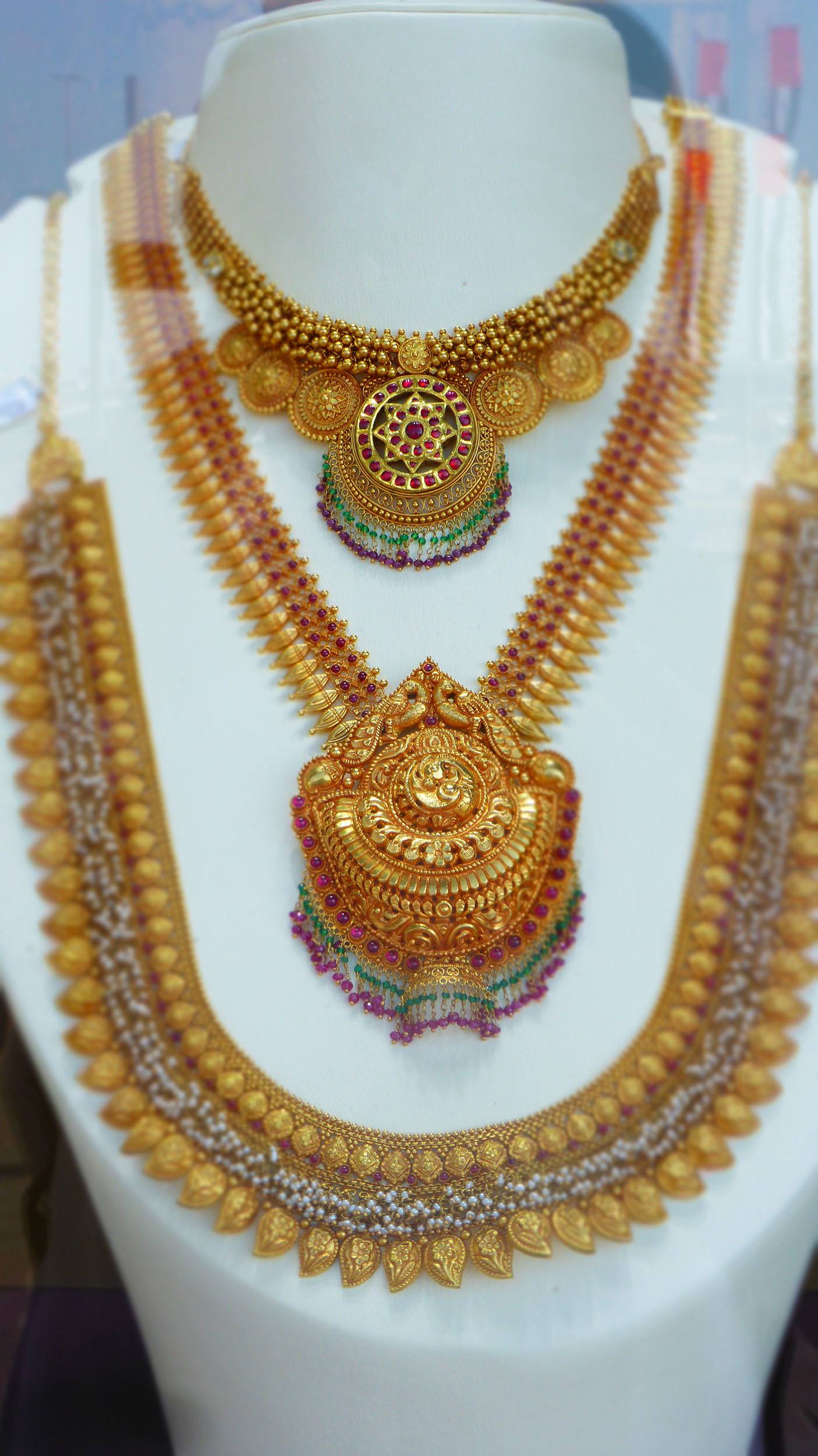
Meanwhile, the Souk Madinat Jumeirah, with its Arabian-style architecture and maze-like alleys, had a charm that felt miles away from Dubai’s futuristic skyline.
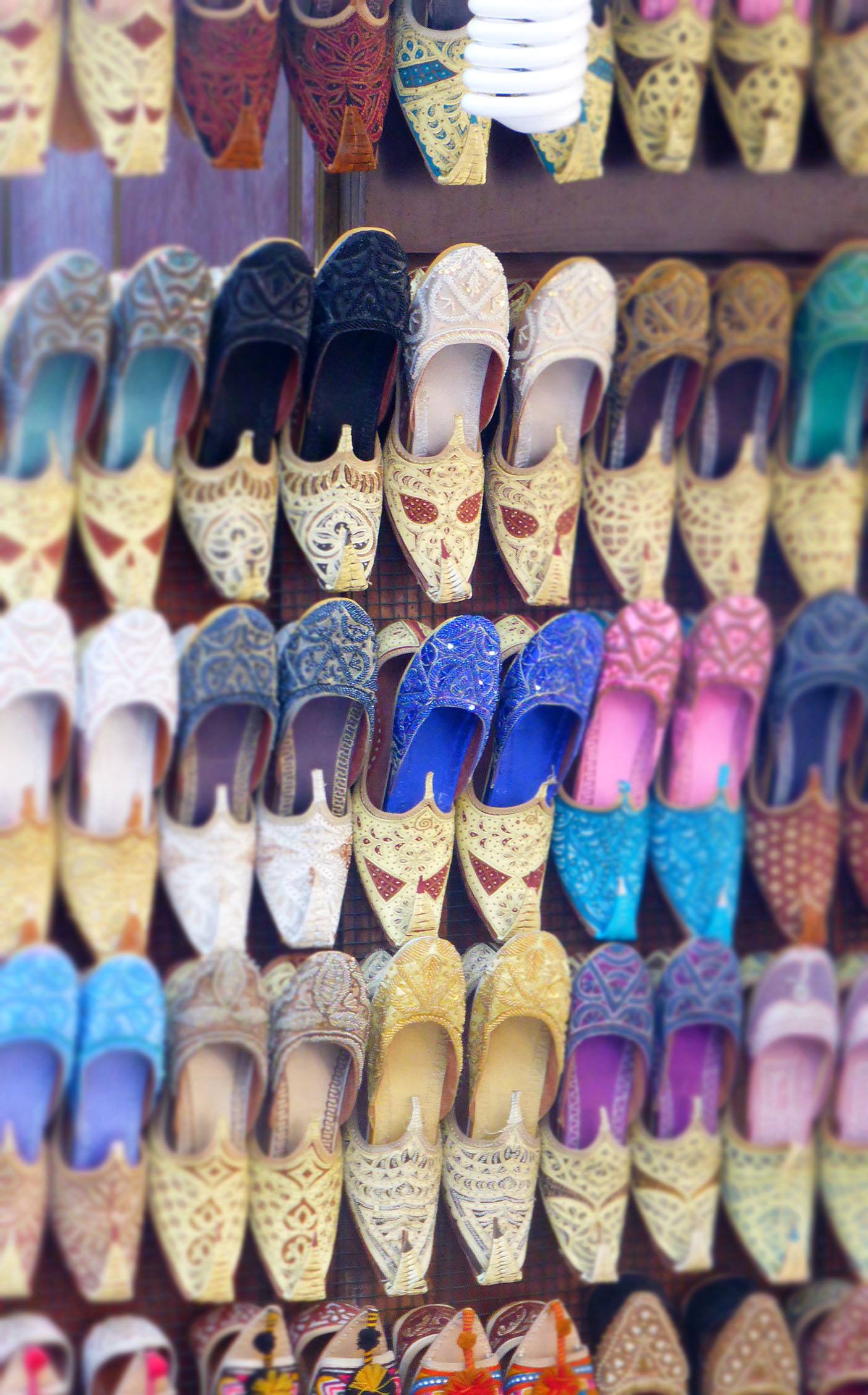
I meandered through stalls overflowing with intricate lanterns, embroidered fabrics, and fragrant spices. Even without making a purchase, the atmosphere alone was worth the visit.
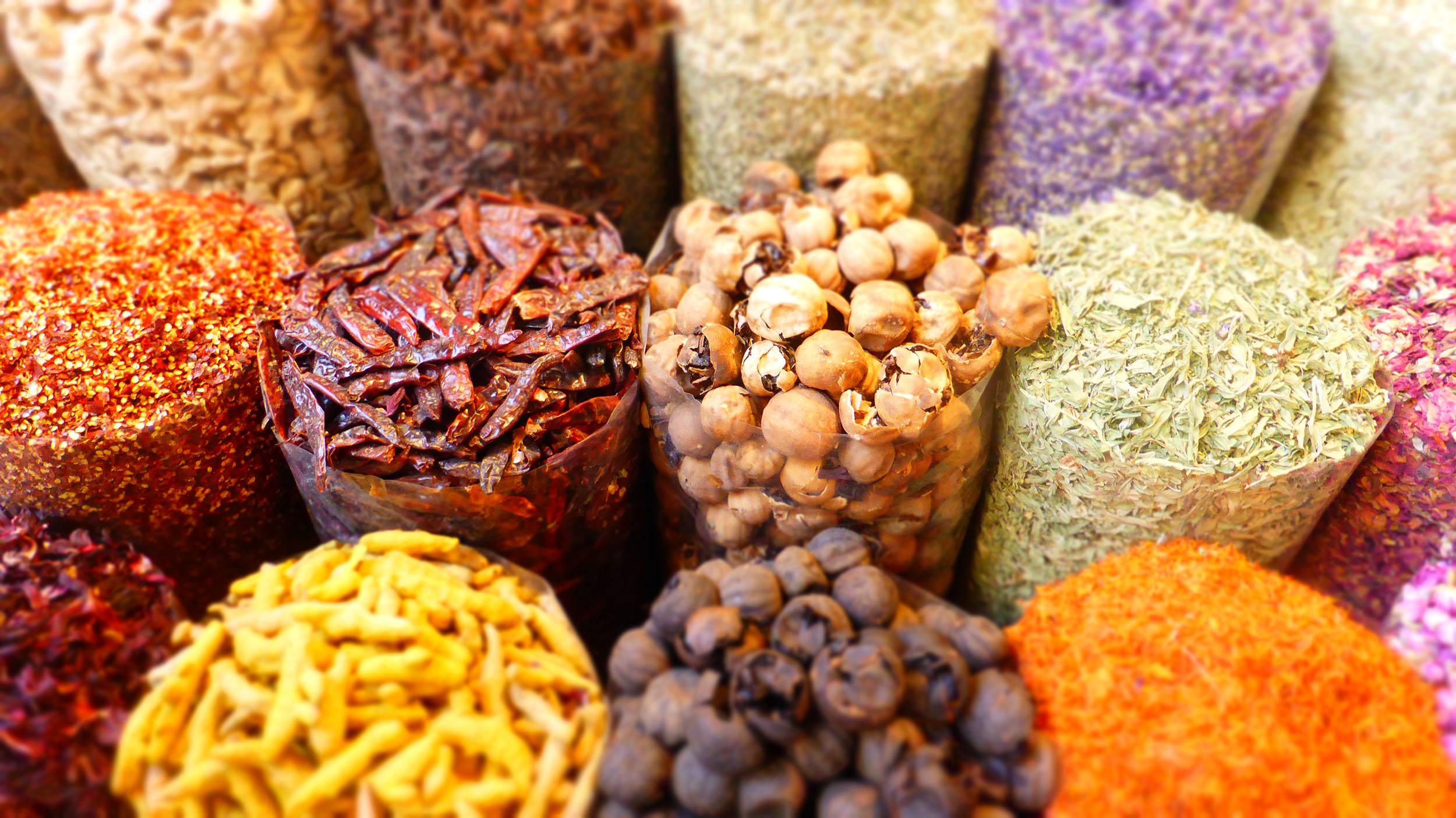
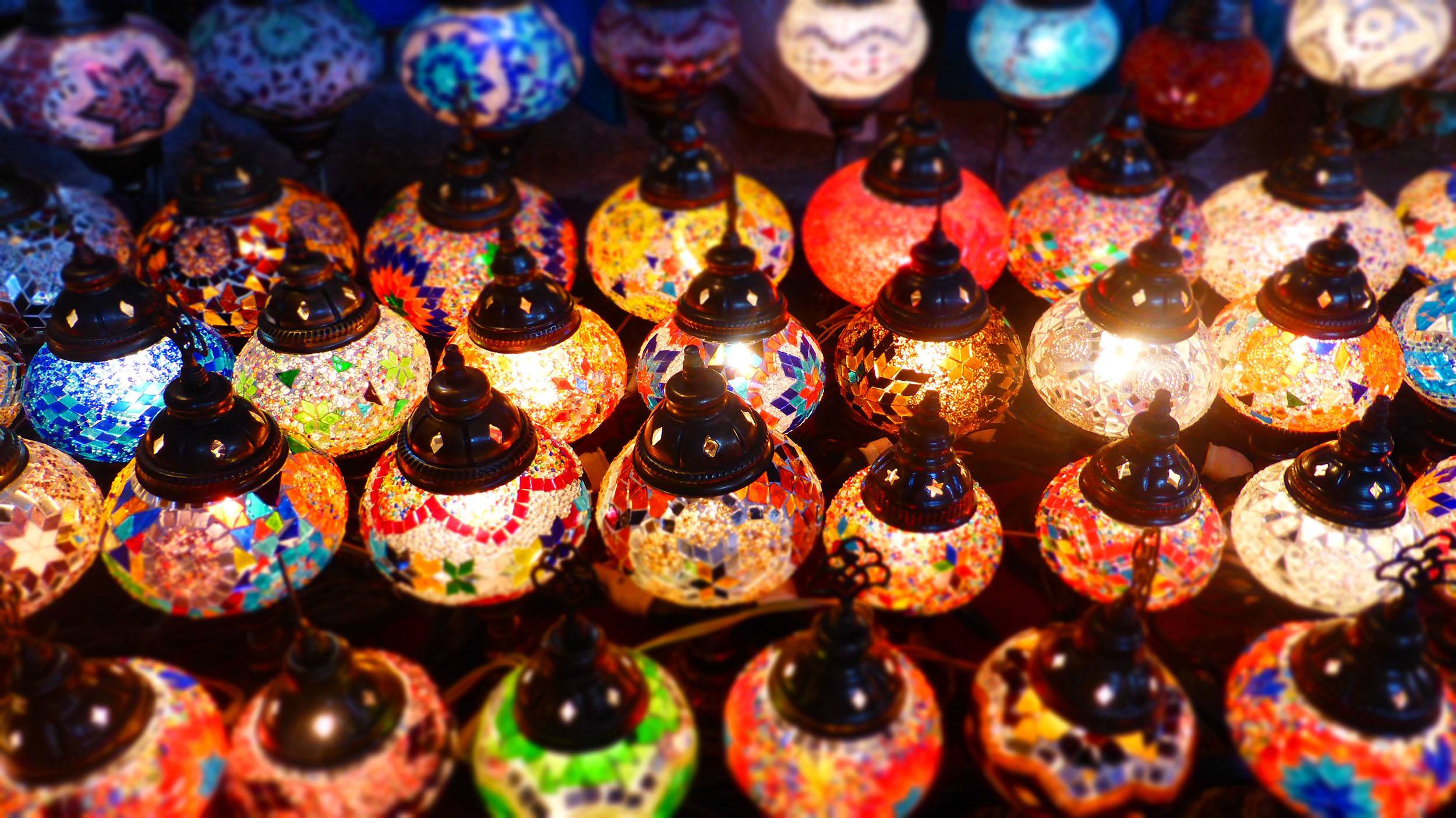
And then there’s the over-the-top entertainment.
Where else can you ski indoors in the middle of the desert? Ski Dubai, located inside the Mall of the Emirates, offers artificial snow, ski slopes, and even penguin encounters. It’s bizarre, extravagant, and so perfectly Dubai.
For those with a bigger budget, the Burj Al Arab remains the pinnacle of indulgence.
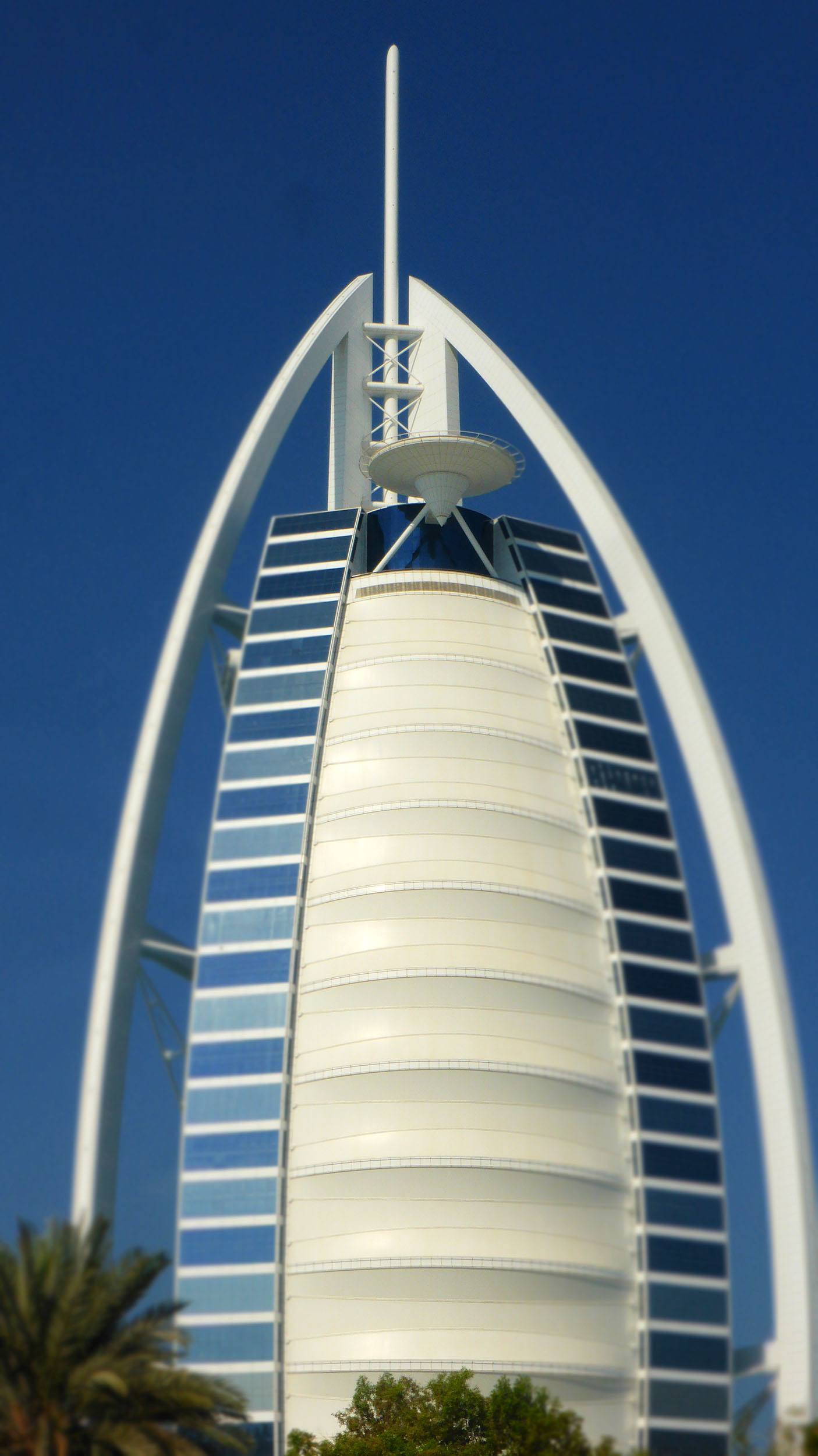
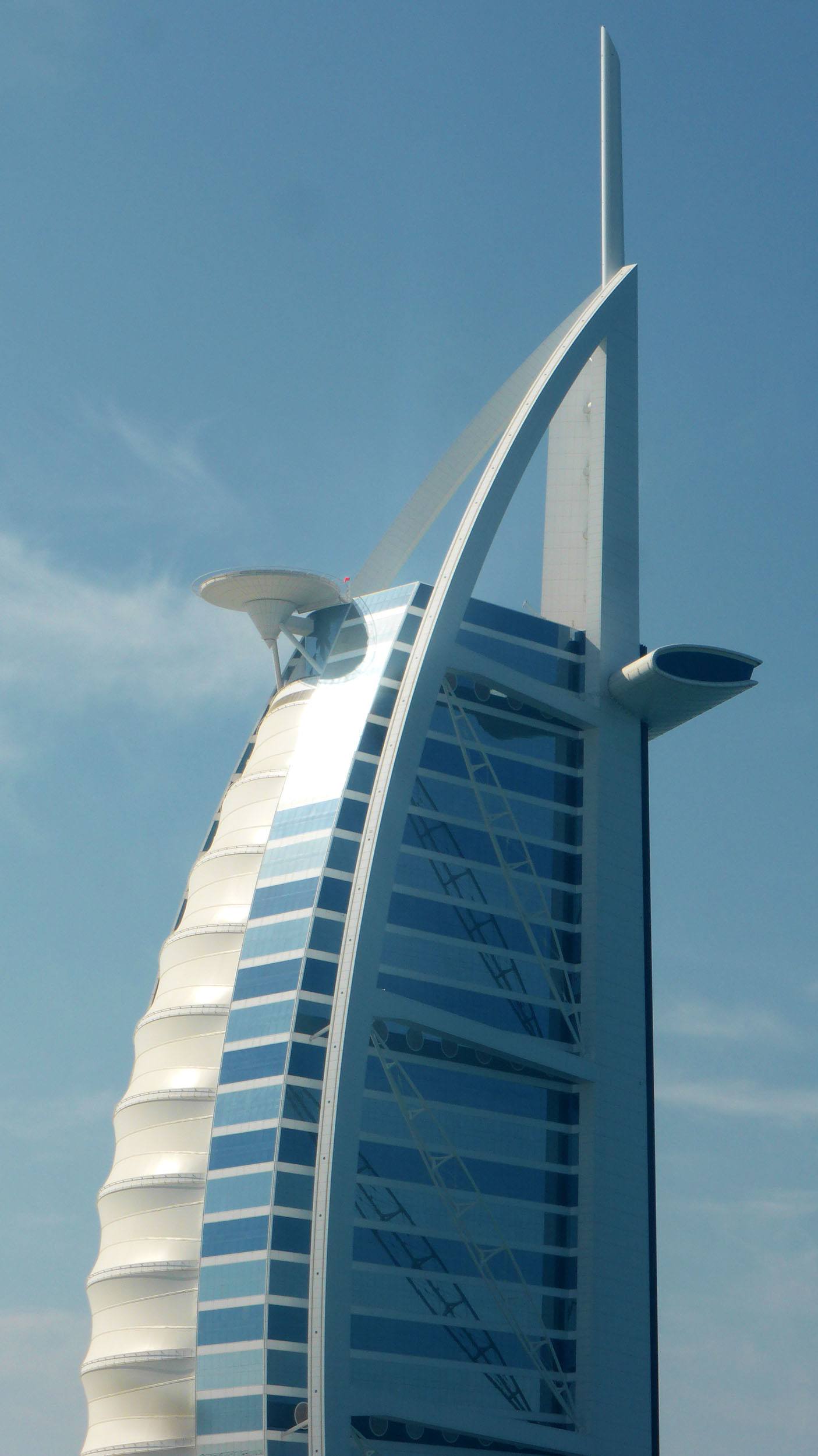
I had no chance of stepping inside — unless I was prepared to book an exorbitantly priced room or arrive in a chauffeur-driven Rolls-Royce. But standing nearby, gazing at its sail-shaped silhouette against the Arabian Gulf, I had to admit — it’s a masterpiece.
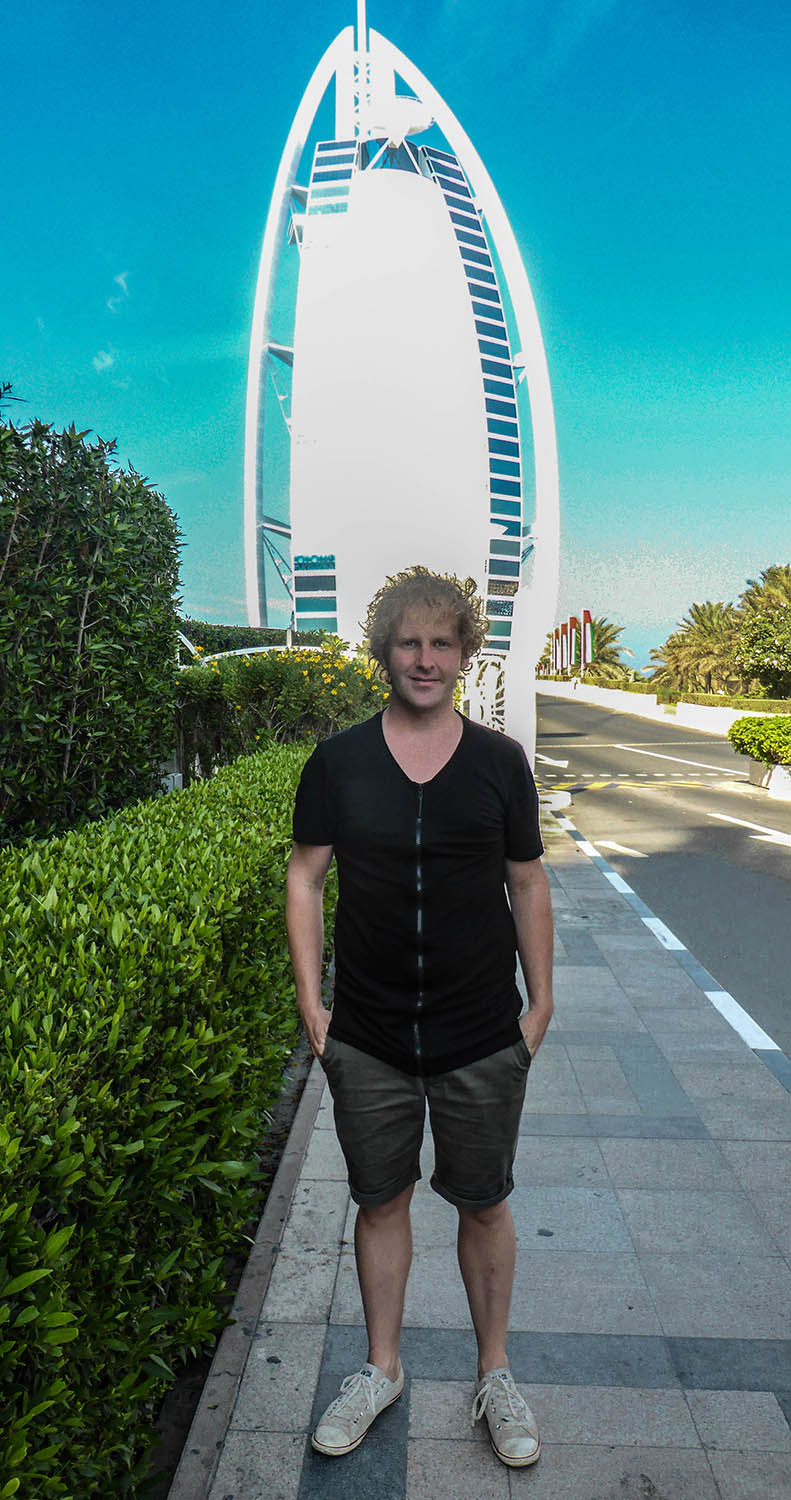
So, is Dubai worth visiting? If sheer spectacle and high-end luxury are what you’re after, Dubai delivers.
Even as a budget traveller, Dubai’s shopping and entertainment scene was impossible to ignore. Whether you’re splurging or just window-shopping, the sheer scale of it all is an experience in itself.
Beach Life and Waterfront Attractions
Dubai’s coastline is as extravagant as the rest of the city — man-made islands shaped like palm trees, luxury resorts that redefine indulgence, and beaches so pristine they feel almost artificial (because, in some cases, they are).
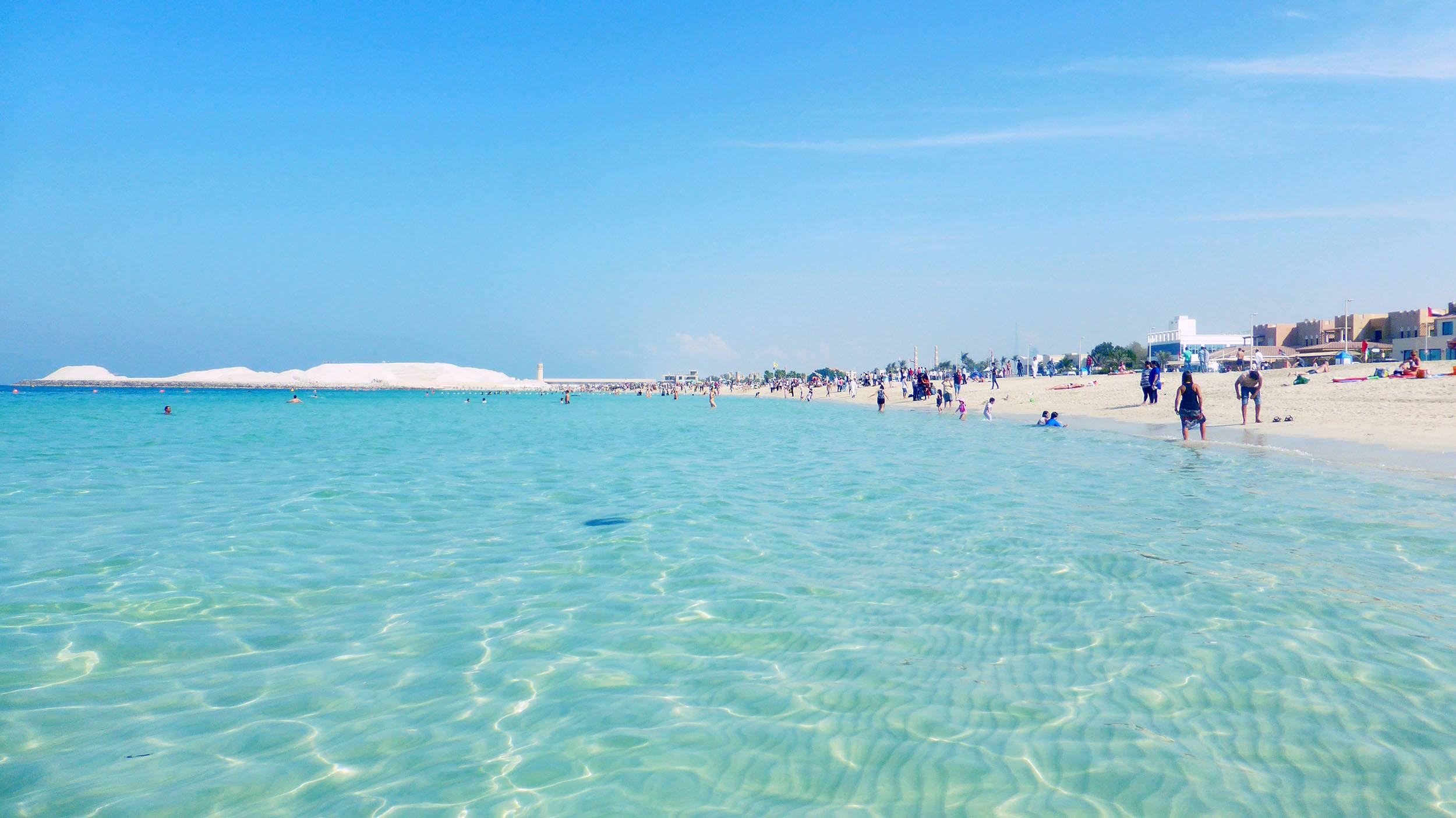
I spent a leisurely afternoon at Jumeirah Public Beach, right next to the iconic Burj Al Arab. While luxury resorts and private beach clubs dominate much of Dubai’s coastline, this public stretch of sand is free to access and offers spectacular views of the sail-shaped architectural marvel. The sand was soft and the water warm.
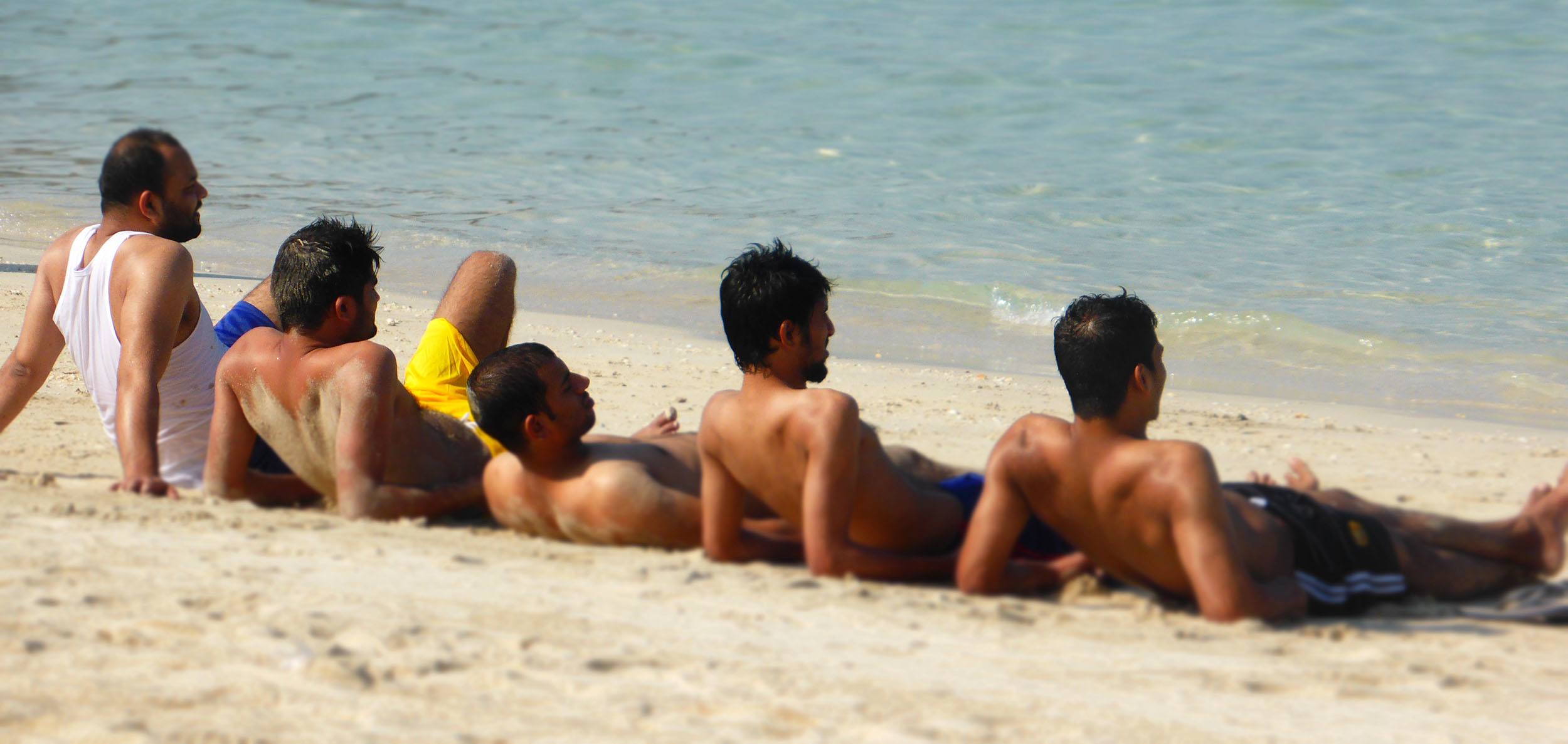
The vibe was relaxed but polished — like everything in Dubai, even casual beach days come with a touch of glamour.
Then there’s the Palm Jumeirah, one of the city’s most audacious feats of engineering. A man-made island shaped like a palm tree, it’s home to some of Dubai’s most expensive hotels and private residences.
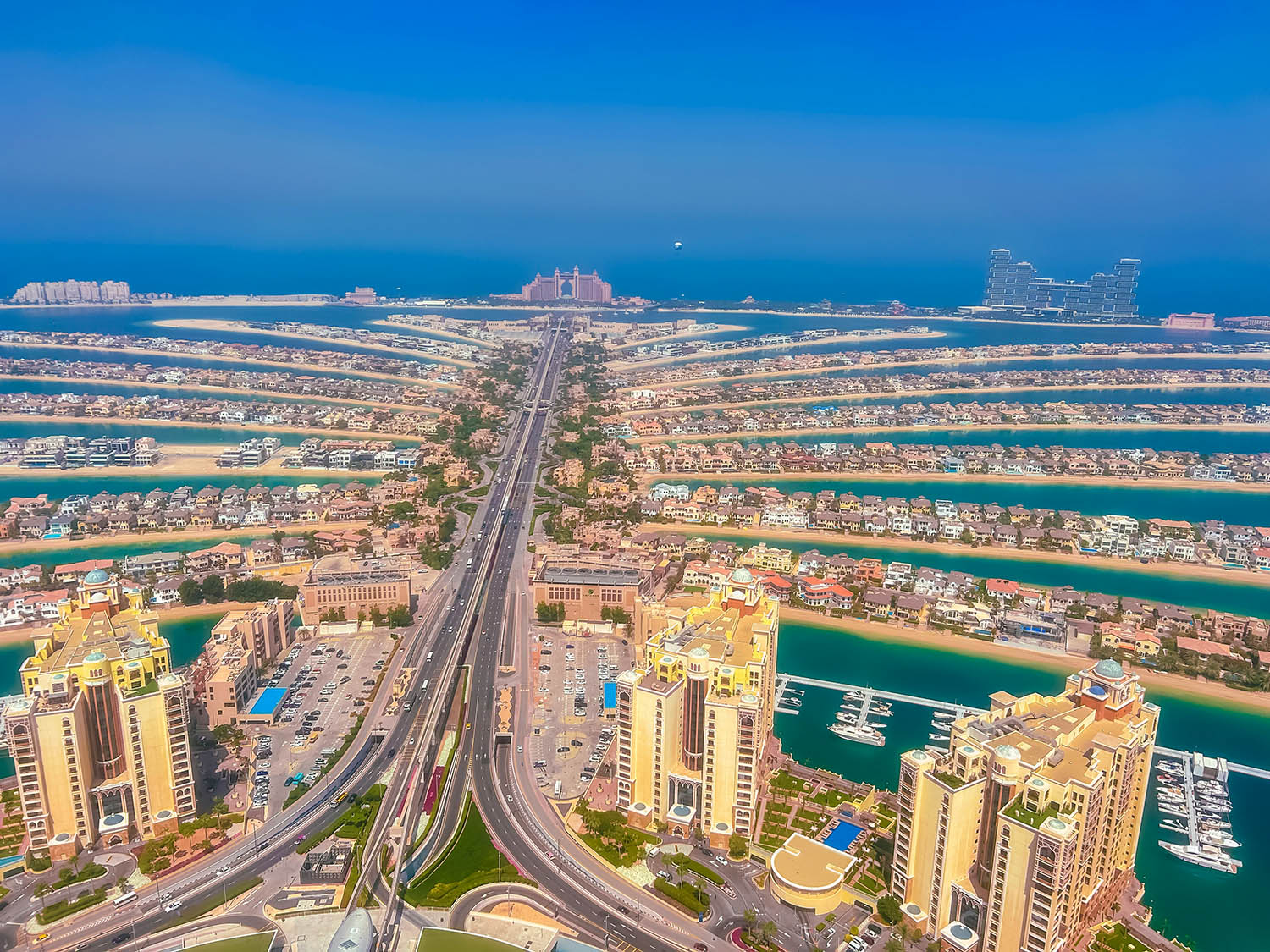
I didn’t stay at the iconic Atlantis, The Palm (a night there would have cost my entire travel budget), but I did wander through the area, soaking in the views and marvelling at the sheer scale of it all.
Dubai’s waterfront is undeniably impressive, but it leans heavily into luxury. If you’re after laid-back, rustic beach charm, this isn’t the place. But if you enjoy resort-style relaxation with a skyline backdrop, there are few places quite like it.
Year-Round Sunshine and Blue Skies
Dubai’s climate is as predictable as it gets — hot, dry, and drenched in sunshine. Whether visiting in winter or summer, blue skies and t-shirt-friendly weather are almost guaranteed (which, for foreigners, is tolerated in the UAE).
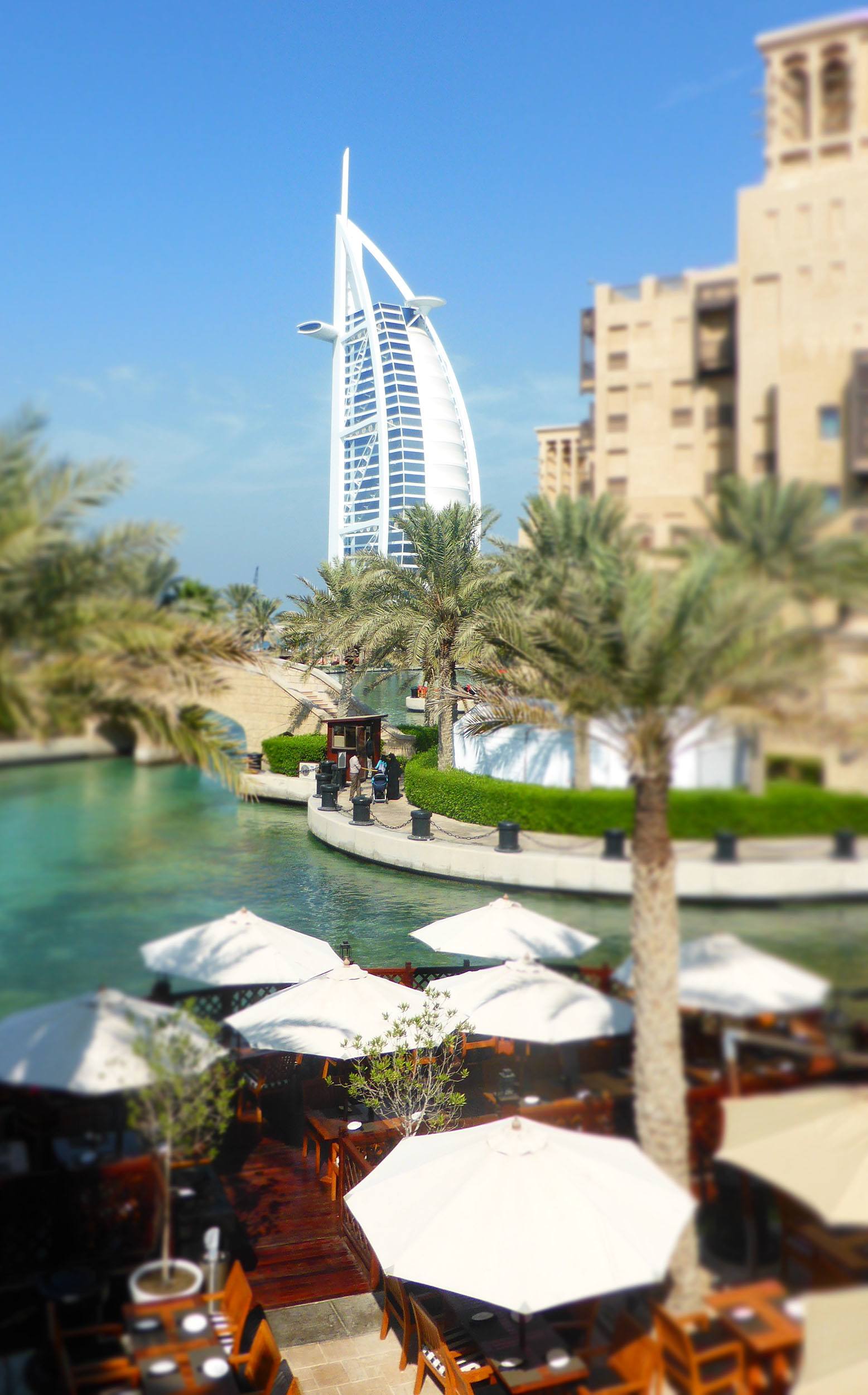
Summer brings searing heat, with temperatures soaring past 40°C, but winter is far more forgiving, settling around a pleasant 25°C. Unlike the stifling humidity of many tropical destinations, Dubai’s dry heat makes even the high temperatures more bearable.
For me, as a solo traveller on a budget, walking almost everywhere was unavoidable. Fortunately, without humidity, it was tolerable — even under the desert sun. Whether you're lounging poolside, exploring the city, or hitting the beach, Dubai delivers sunshine in abundance.
That said, the city isn’t completely immune to extreme weather. The severe floods in 2024 were a stark reminder that, while rare, heavy rainfall can occasionally disrupt Dubai’s usual desert predictability.
Echoes of the Bedouin Past
When I think of Dubai, I don’t immediately picture a time when Indigenous people fished and lived simply off the land. Yet, that was the reality before oil reshaped everything.
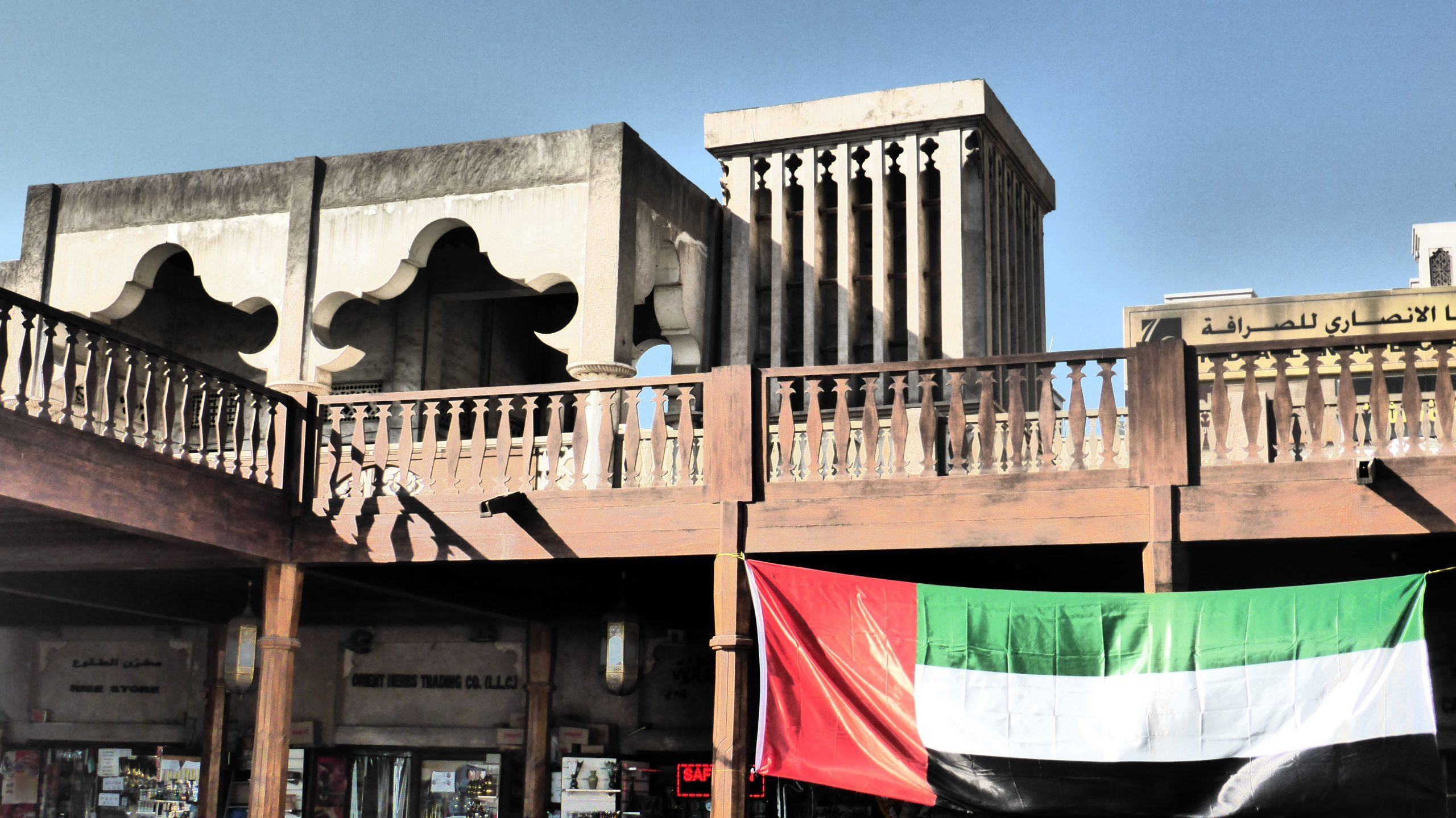
Curious to see this side of Dubai, I visited the Dubai Museum, where I walked through a mock-up Bedouin residence and explored displays of traditional boats, ships, and artefacts that told the story of the city’s humble beginnings.
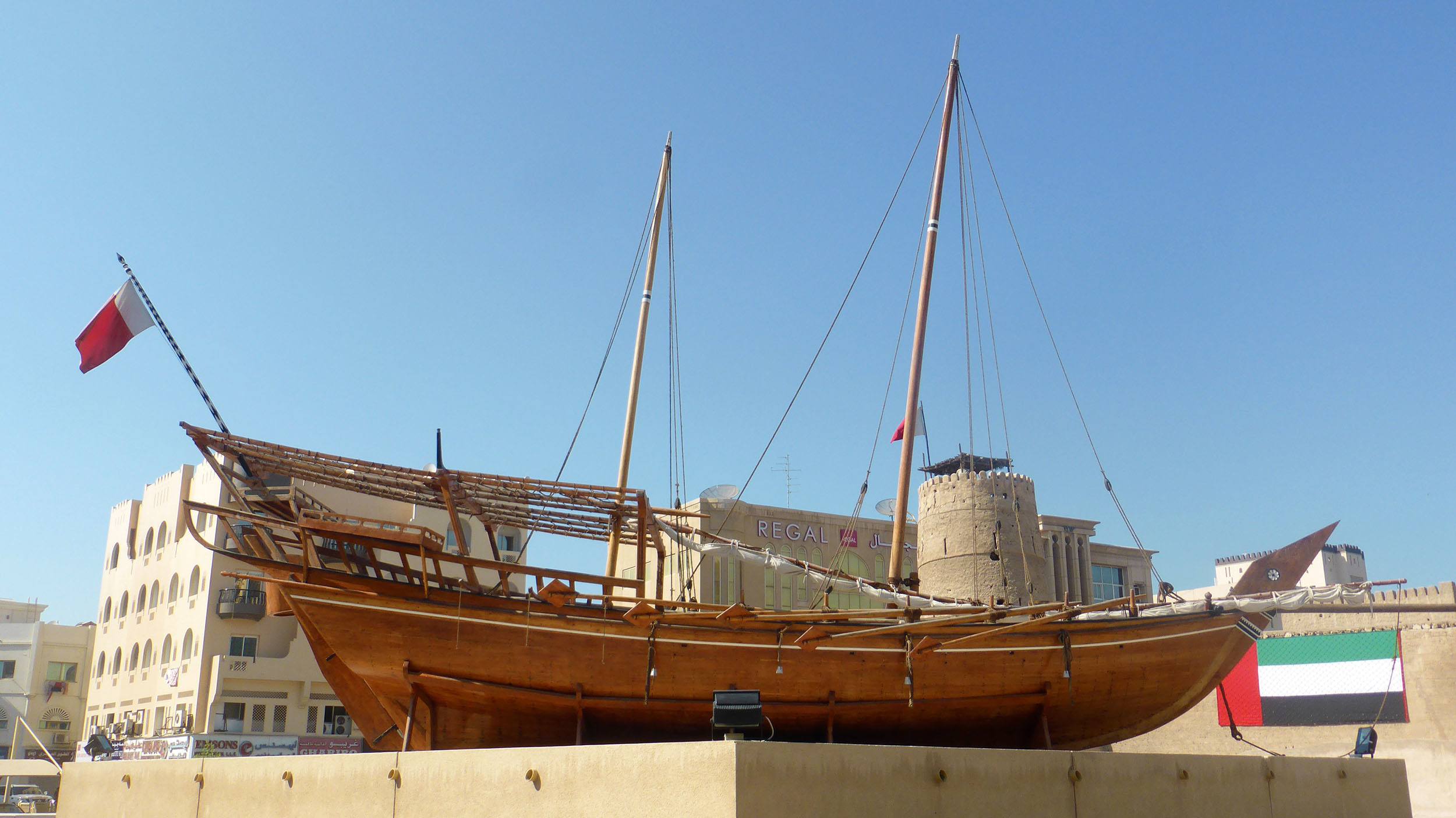
It was a fascinating contrast — a stark juxtaposition between the resourceful, nomadic past and the ultramodern wealth of today’s skyline. Dubai may be a city of glass and steel now, but glimpses of its Bedouin heritage still linger beneath the surface.
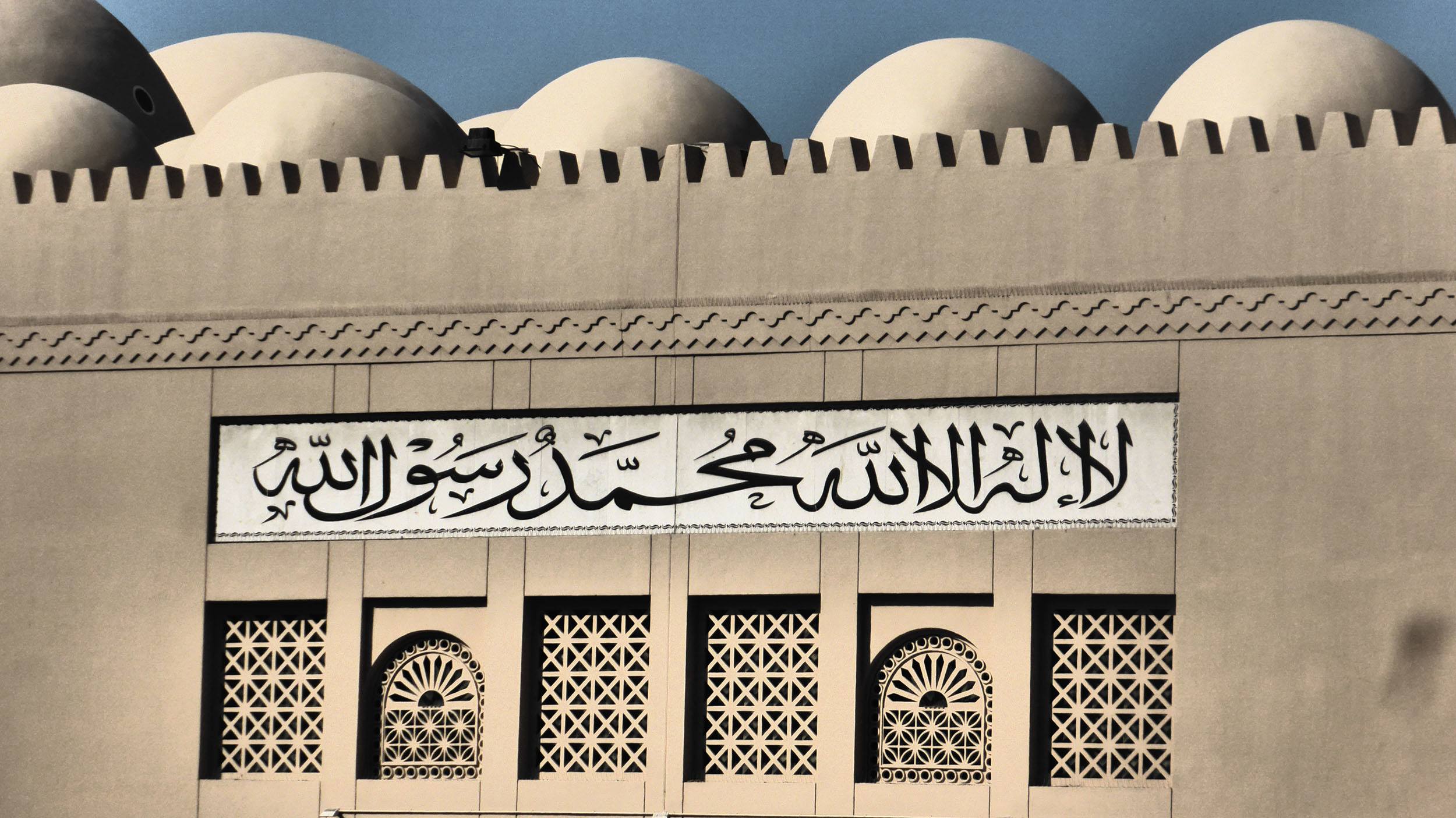
While the skyscrapers dominate the skyline, echoes of the old Dubai remain, if you know where to look.
Why Dubai Might Not Be for Everyone
For all its sky-high ambitions, luxury, and record-breaking attractions, Dubai isn't a one-size-fits-all destination. I couldn’t ignore the feeling that beneath the glitz, something was missing — a sense of depth, raw authenticity, and a connection to the culture beyond the curated tourist experience.
If you thrive on historic old towns, affordable travel, and a strong cultural identity that isn’t polished for visitors, Dubai might leave you feeling underwhelmed. While I found moments of fascination, I also questioned whether the city's hyper-modern facade had overshadowed its soul.
A City That Feels Like a Luxury Theme Park
Dubai often feels less like a city and more like a carefully curated spectacle — a place where everything is built to impress but lacks the organic charm of cities that have grown over centuries.
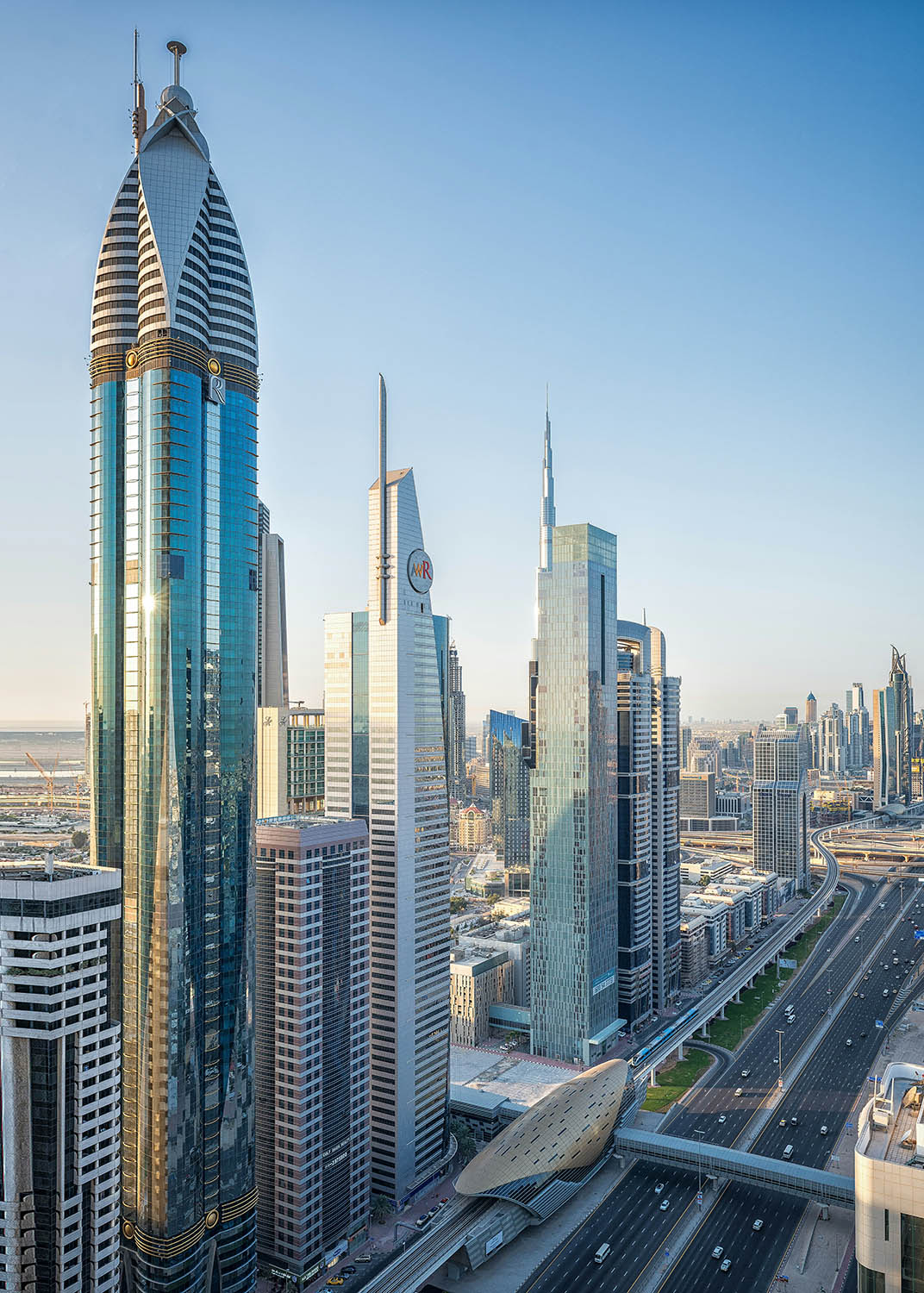
Wandering through its ultra-modern streets, I couldn't shake the feeling that I was in a luxury theme park, where everything is man-made, gleaming, and meticulously designed to dazzle rather than to tell a deeper story.
While I admired the sheer scale of ambition — man-made islands, choreographed fountains, even an indoor ski slope in the desert — I found myself craving something real. The kind of cultural depth that comes from historic streets, timeworn markets, and traditions that haven’t been commercialised for tourists.
Instead, much of Dubai felt polished to perfection but devoid of spontaneity, like a city that had been constructed for Instagram rather than for those seeking an authentic travel experience.
The High Cost of Visiting Dubai
For budget-conscious travellers wondering, 'Is Dubai worth visiting?', the high costs can make it a challenging destination.
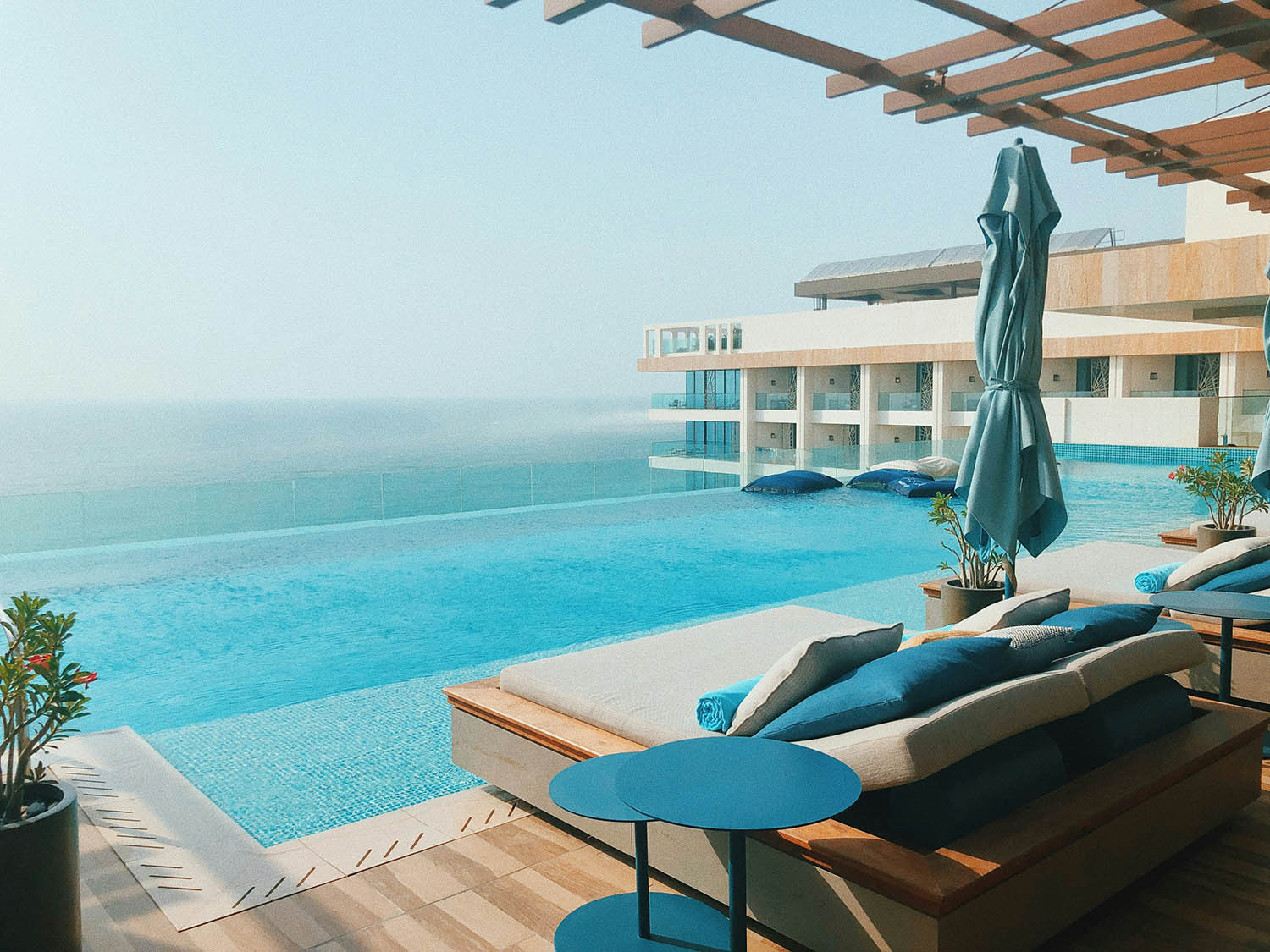
From luxury hotels with infinity pools to high-end restaurants boasting Michelin stars, everything here seems designed to part you from your money. Even basic accommodations and meals often come with a premium price tag, and while there are budget options, they feel like an afterthought in a city built on extravagance.
I found myself constantly calculating costs — should I splurge on a Burj Khalifa observation deck ticket or stretch my budget for another day in the city? Even public transport, while affordable, pales in comparison to the ease of taxis and private cars, which add up quickly.
And while I sought out street food and local eateries, the options were nowhere near as plentiful or cheap as in other Middle Eastern cities.
Dubai offers no shortage of luxury, but if you’re someone who thrives on affordable, authentic travel experiences, you might find your wallet taking a hit long before you feel like you've truly soaked in the city.
Strict Rules and Cultural Considerations
Dubai is often painted as a modern metropolis, but underneath the glitz and glamour, traditional laws still apply. Dress codes, public behaviour restrictions, and strict alcohol regulations can catch some visitors off guard.
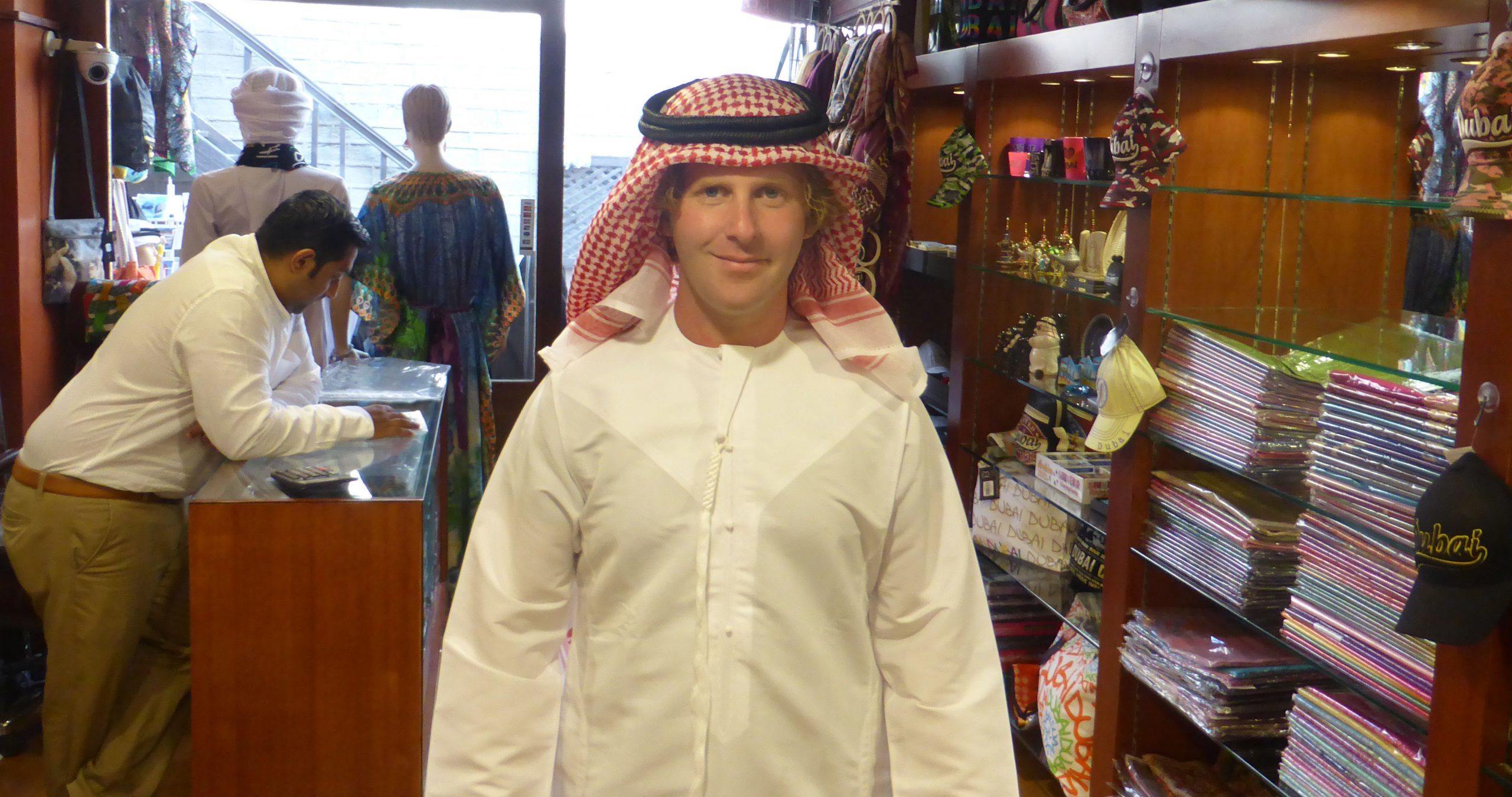
That said, I’m not the kind of traveller who walks around shirtless or wears anything particularly revealing, so the dress codes didn’t affect me. Similarly, I’m not a big drinker, so Dubai’s alcohol restrictions weren’t much of an issue either.
But for those who enjoy spontaneous nightlife, public displays of affection, or a casual beer at the beach, the city’s regulations can feel restrictive.
Drinking is only allowed in licensed venues — forget about grabbing a bottle from a convenience store — and public intoxication is strictly prohibited.
Even simple gestures, like swearing or showing frustration in public, can land you in trouble.
While I never felt like I had to walk on eggshells, it’s a place where awareness of local laws is key to avoiding an unexpected fine (or worse).
The Lack of Traditional Middle Eastern Charm
One of the things I love most about travelling in the Middle East is the people — the warmth, the conversations, the chance to truly engage with locals in a way that feels natural.
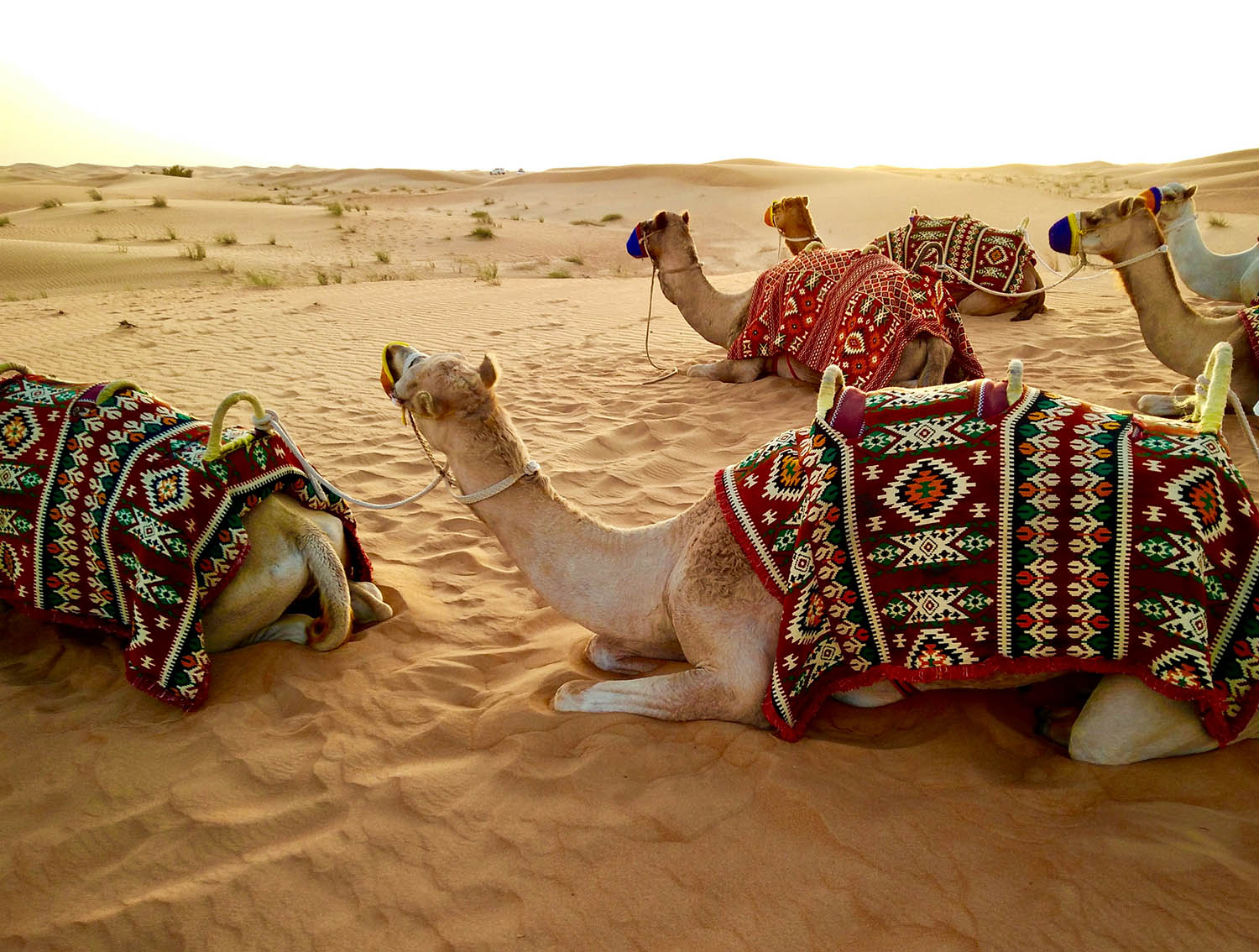
In Jordan and Egypt, I was constantly rubbing shoulders with everyday people, whether it was chatting with vendors in Amman’s souks, sharing tea with Bedouins in Wadi Rum, or getting restaurant recommendations from friendly Egyptians in Cairo. That kind of interaction made the experience — it was real, it was raw, and it gave those places their depth and soul.
Dubai, in contrast, felt polished to perfection, but also sterile. Emiratis seemed almost invisible, tucked away behind the gleaming high-rises and luxury enclaves. I rarely saw them, let alone interacted with them.
The city runs on an enormous expat and migrant workforce, and while that makes for an interesting mix, it also meant I never really felt like I was in a truly Emirati space. It was as if the actual culture of Dubai was happening behind closed doors, out of sight.
For a destination that brands itself as the gateway to the Middle East, it felt strangely detached from the region’s heart and soul.
How to Make the Most of Your Dubai Trip
Despite its shortcomings, I know Dubai still appeals to many travellers — especially those drawn to modern marvels, luxury, and a touch of the surreal. And while it wasn’t my ideal destination, I did find ways to enjoy it.
If you’re planning a trip and want to experience the best of Dubai while avoiding some of its less appealing aspects, there are ways to make the most of your visit. Here’s how to navigate the city wisely and get the most out of your time in this glitzy desert metropolis.
Budget-Friendly Ways to Experience Dubai
Dubai is often seen as a playground for the wealthy, but that doesn’t mean you need to burn through your savings to enjoy the city. While luxury is everywhere, there are plenty of affordable and even free ways to experience Dubai without spending a fortune.
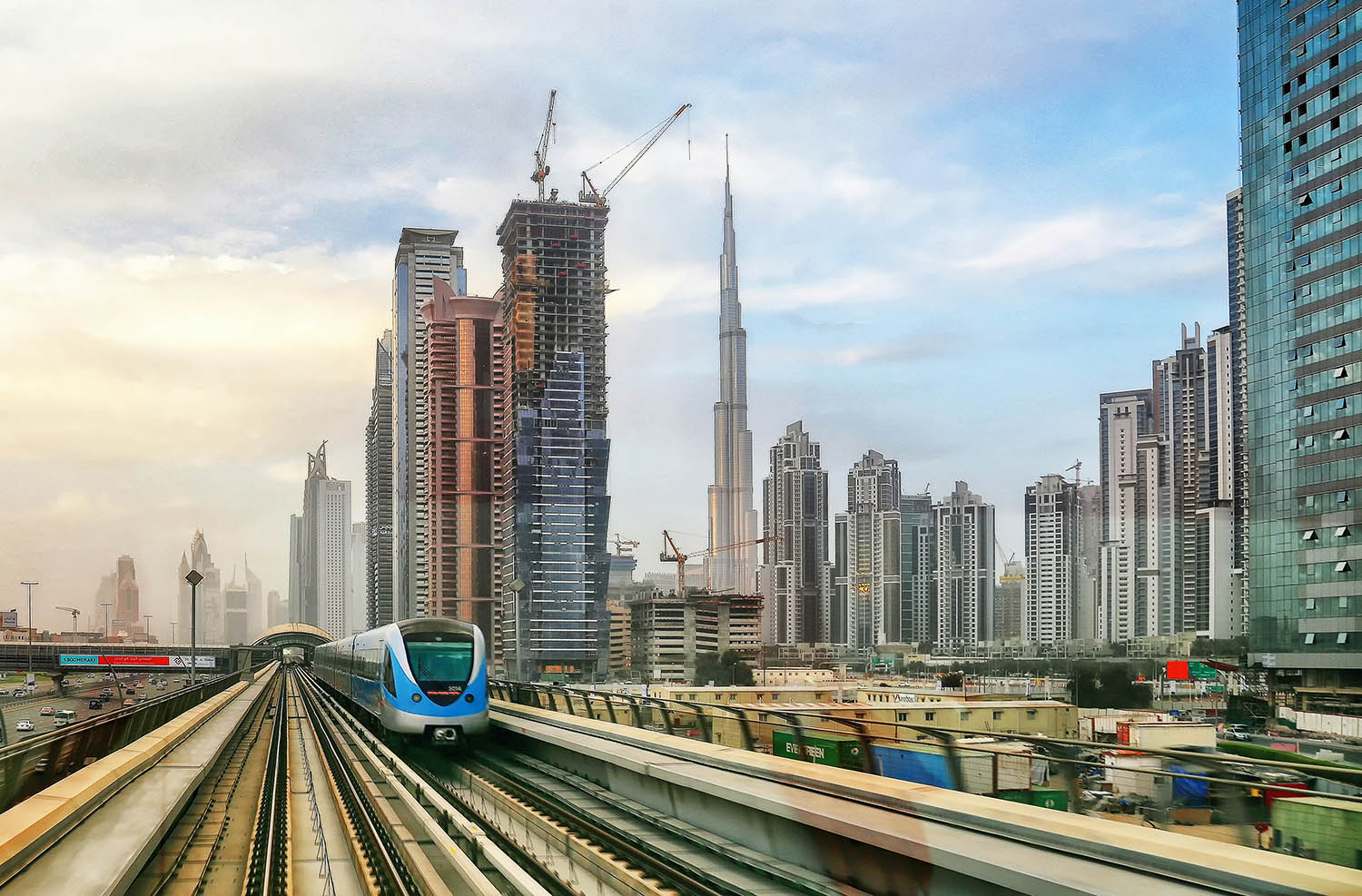
I made use of public transport — the metro is clean, efficient, and far cheaper than taxis. For sightseeing, I found that wandering through Old Dubai, strolling along the Dubai Marina, and even visiting the public beaches offered a great experience at zero cost.
Food-wise, avoiding the tourist-heavy fine dining spots was key. Instead, I sought out local eateries and small Indian, Pakistani, and Middle Eastern restaurants where meals were much more affordable and arguably more authentic.
If you know where to look, Dubai can be surprisingly accessible for budget travellers.
Off-the-Beaten-Path Spots for a Different Side of Dubai
Dubai’s futuristic skyline and luxury shopping malls dominate most itineraries, but I found that the most interesting side of the city exists in places many tourists overlook.
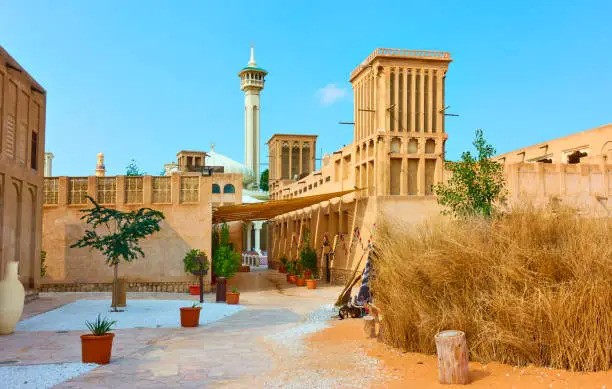
Al Fahidi Historical District was one of my favourite discoveries. Wandering through its narrow alleyways, I felt like I had stepped into a different era — before the glitz and glamour took over. Traditional wind-tower houses, sand-coloured courtyards, and charming cafes gave me a glimpse of what Dubai was like before the skyscrapers.
A short stroll away, Dubai Creek offers a refreshing contrast to the city's polished modernity.
I hopped on an abra (traditional wooden boat) for just 1 AED, crossing the creek alongside locals heading to the bustling Gold and Spice Souks. The souks felt alive with history — merchants calling out their wares, the scent of exotic spices in the air, and intricate gold jewellery sparkling under shop lights.
For an even deeper cultural dive, you can visit the Coffee Museum in Al Fahidi. It’s a tiny, unassuming spot, but inside, you'll learn about the region’s deep coffee traditions and sip authentic Arabic coffee in a cosy, heritage-filled setting.
These places didn’t feel staged or artificial. They were rich with history, character, and the kind of authenticity I often struggled to find in other parts of the city.
Best Time to Visit Dubai for the Ideal Experience
Timing a trip to Dubai can make or break the experience. Visit at the wrong time, and you’ll be sweating through 45°C (113°F) heat, wondering why you ever left home. Pick the right season, and you’ll get pleasant weather, lively events, and a much more enjoyable trip.

For me, winter (November to March) was the sweet spot. With daytime temperatures hovering around 25°C (77°F), I could comfortably explore the city without feeling like I was melting into the pavement. This is also when Dubai is at its busiest — tourists flood in for major events like Dubai Shopping Festival (January-February) and Dubai World Cup (March), and outdoor attractions like the Miracle Garden and Global Village come to life.
Shoulder season (April and October) is a gamble. Temperatures start rising, but it's still manageable, and you’ll find fewer crowds and slightly better hotel prices.
Summer (May to September) is brutal unless you plan to stay inside air-conditioned malls the entire time. However, if you don’t mind extreme heat, this is when you’ll find cheaper accommodation and flights, and Dubai’s indoor attractions — Ski Dubai, The Green Planet, and Dubai Aquarium — are still worth a visit.
For the ideal Dubai experience, I’d stick to winter — when the city is at its best and the outdoor experiences, from desert safaris to beach lounging, are actually enjoyable.
Essential Info for Visiting Dubai
Before booking your trip, it’s worth knowing the basics — visa requirements, transportation, local customs, and practical tips to make your visit smoother.
How to Get to Dubai
Dubai is one of the most well-connected cities in the world, making it relatively easy to reach from almost anywhere. Here’s how to get there:
▶ By Air
Dubai International Airport (DXB) is the primary gateway to the city and one of the busiest airports globally. It serves as a major hub for Emirates Airlines, offering direct flights from hundreds of destinations worldwide.
For those flying with budget carriers, Al Maktoum International Airport (DWC), located in Dubai South, also handles a growing number of international and regional flights.
▶ By Land
If you’re coming from neighbouring Gulf countries like Oman or Saudi Arabia, you can drive to Dubai via well-maintained highways.
Bus services, such as the Emirates Express from Abu Dhabi and intercity routes from Oman, also provide a cost-effective alternative.
▶ By Sea
Dubai is a popular stop for luxury cruises, with Port Rashid serving as the main cruise terminal. While it’s not a primary entry point for most travellers, cruise visitors can easily explore the city during their stopover.
How to Get around Dubai
Dubai’s transport system is modern, efficient, and well-connected, but the city’s vastness means that how you get around will depend on where you're going. Here’s what to expect.
▶ On Foot
Walking in Dubai is only practical in specific areas, such as Downtown Dubai, Dubai Marina, and Old Dubai, where attractions are clustered together. However, the city’s sheer size, heat (especially in summer), and highway-like roads make walking between districts impractical.
Pedestrian infrastructure is improving, but jaywalking is illegal and heavily fined, so always use designated crossings.
▶ By Metro
The Dubai Metro is a fast, clean, and affordable way to travel, covering major areas like Burj Khalifa, Dubai Mall, Deira, and Dubai Marina. The Red Line runs along Sheikh Zayed Road, while the Green Line services older parts of the city.
Trains are fully automated, and carriages include a Gold Class section (premium seating) and a women-only section.
▶ By Tram
The Dubai Tram operates in the Marina and JBR areas, linking with the Metro. It’s useful for exploring these districts but doesn’t cover much of the city.
▶ By Bus
Dubai’s public bus network is extensive, but travel times can be long due to frequent stops. Buses are useful for reaching areas not serviced by the Metro, but routes can be confusing for first-time visitors.
The Nol Card (used for the Metro) also works on buses.
▶ By Taxi & Ride-Sharing
Taxis are plentiful, metered, and relatively affordable compared to Western cities. Careem and Uber also operate in Dubai, offering a convenient alternative with upfront pricing.
Tip: If using taxis, opt for official Dubai RTA taxis rather than private ones to avoid inflated fares.
▶ By Water Taxi & Abras
For a scenic and budget-friendly ride, take an abra (traditional wooden boat) across Dubai Creek, linking Deira and Bur Dubai. Water taxis and ferries also operate along the coastline, offering great views of the skyline.
Visa Regulations for Visiting Dubai
Dubai’s visa policies are relatively straightforward, but they vary depending on your nationality, length of stay, and purpose of visit. Here’s what you need to know:
▶ Visa-Free Entry & Visa on Arrival
Citizens of 60+ countries, including the UK, EU, USA, Canada, Australia, and New Zealand, can enter visa-free or obtain a visa on arrival for stays ranging from 30 to 90 days.
- 30-day visa on arrival: Most Western passport holders (UK, USA, Canada, Australia, New Zealand)
- 90-day visa on arrival: Some EU countries, South Korea, Argentina, Brazil, Russia
- 14-day visa on arrival: Certain nationalities in partnership with the UAE
Tip: Always check the latest visa requirements before travel, as policies can change.
▶ Tourist Visa (Pre-Arranged)
If your nationality does not qualify for a visa on arrival, you’ll need to apply for a UAE tourist visa before arriving.
- Available for 30 or 60 days
- Can be arranged through a UAE airline, hotel, or licensed tour operator
- Requires a passport with at least six months’ validity
▶ Transit Visa
If you have a layover in Dubai for 8–48 hours, you may be eligible for a transit visa, which allows a short visit to the city. This is typically arranged through your airline.
▶ Work & Long-Term Visas
For those looking to work, study, or live in Dubai, visas must be sponsored by an employer, university, or family member. The Golden Visa is available for highly skilled professionals, investors, and entrepreneurs, offering long-term residency.
▶ Overstaying & Fines
Overstaying a visa results in daily fines and potential travel bans. If you need more time in Dubai, apply for a visa extension before your current visa expires.
Whether you’re visiting for a few days or planning an extended stay, ensuring your visa is in order will make your trip to Dubai hassle-free.
Where to Stay in Dubai
Finding accommodation in Dubai largely depends on your budget and travel priorities. While the city is famous for its ultra-luxurious hotels and beachfront resorts, budget options are much harder to come by.
Budget: WeStay Capsule Hostel
If you're looking for a budget stay in Dubai that won’t drain your wallet, WeStay Capsule Hostel is a solid option. It’s clean, surprisingly spacious for a capsule setup, and just a short walk from Al Ghubaiba Metro Station — making it easy to get around without relying on pricey taxis.
Not luxury, but for a cheap, safe, and well-located place to crash, it does the job.
Mid-Range: Super 8 by Wyndham Dubai Deira
For a mid-range stay that won’t drain your bank account, Super 8 by Wyndham Dubai Deira is a solid choice. It’s not central, but with the metro nearby and the Gold Souk within walking distance, it’s well-connected without the price tag of Dubai’s glitzier hotels.
Comfortable rooms, friendly staff, and an affordable base to explore the city — what more do you need?
High End: Sofitel Dubai The Obelisk
If you’re after 24-hour butler service, a rooftop infinity pool, and a breakfast that probably costs more than your monthly rent, Sofitel Dubai The Obelisk is calling your name. One of over 345 five-star hotels in Dubai, it offers the kind of luxury where even the napkins feel expensive.
But if your budget leans more hostel dorm than haute couture, maybe just pop in, admire the lobby, and quietly slip back to your capsule pod.
Money Matters – Currency and Spending in Dubai
Dubai’s economy runs on the United Arab Emirates Dirham (AED), and while credit cards are widely accepted, it’s always handy to have some cash on hand, especially for smaller purchases in traditional markets or local eateries.
▶ Currency and Exchange Rates
The UAE Dirham (AED) is pegged to the US dollar at a fixed rate of 1 USD = 3.67 AED. Exchange rates for other currencies fluctuate, so it’s best to check before your trip.
Currency exchange offices are found in malls, airports, and souks, but you’ll often get the best rates at exchange bureaus in Deira or Bur Dubai.
▶ Cash vs. Card – What’s Best?
- Cards: Major credit and debit cards (Visa, Mastercard, and American Express) are accepted almost everywhere, including taxis, restaurants, and malls.
- Cash: Useful for small vendors, public markets, and tipping. Some taxi drivers prefer cash, even though they accept cards.
- ATMs: Readily available, but withdrawal fees can be high, so check with your bank before using them.
▶ Cost of Everyday Expenses in Dubai
Dubai is known for being expensive, but costs can vary depending on your travel style. Here's what to expect:
- Coffee at a café: 15–25 AED
- Meal at a mid-range restaurant: 50–100 AED per person
- Metro ticket: 3–7.50 AED (depending on zones)
- Taxi ride (5km): 12–20 AED
- Burj Khalifa entry (standard ticket): 169 AED
▶ Tipping Culture in Dubai
Tipping isn’t mandatory, but it’s appreciated:
- Restaurants: 10% if service isn’t included
- Taxis: Round up the fare
- Hotel staff: 5–10 AED for bellboys and housekeeping
- Tour guides: 10–20 AED per person
Understanding Dubai’s currency and spending habits can help you manage your budget and avoid unexpected costs in this famously luxurious city.
Travelling Solo in Dubai - What it's Like
Dubai is a fine destination for solo travellers, offering safety, convenience, and a well-connected city layout. I never felt uneasy walking around, even at night, and public transport made getting from place to place easy. That said, Dubai is not a place where solo travellers naturally fall into conversation with locals, as you might in other Middle Eastern destinations.
Unlike Jordan or Egypt, where I was constantly interacting with locals, Dubai’s Emirati population remains largely out of sight. They make up less than 15% of the population, and most daily interactions are with expats or foreign workers.
While I didn’t have deep cultural exchanges with Emiratis, I did engage with people from India, Pakistan, the Philippines, and Africa, who make up much of Dubai’s workforce. Conversations often centred around life in Dubai, work, and the contrast between their home countries and the UAE.
Dubai is also one of the safest cities in the world, with strict laws and a low crime rate.
I never felt at risk, even when exploring at night. As a solo traveller, this meant I could relax and enjoy my time without worrying about personal safety. However, laws on behaviour, dress, and public conduct are strict, so it’s important to be mindful of local customs.
In terms of social interaction, Dubai doesn’t have the same spontaneous energy as backpacker hubs or culturally immersive destinations. Public transport is easy to use, cafés and malls are comfortable for solo visitors, and tours can be a good way to meet people. But it’s not the kind of place where you strike up deep conversations with locals over tea in a market.
If you’re looking for safety, efficiency, and modern comforts, Dubai is a great place to visit solo. However, if you seek deep cultural immersion, spontaneous connections with locals, or a strong backpacker community, you might find it lacking.
It’s a city designed for luxury and business, which makes solo travel feel a little more structured rather than free-flowing.
Final Thoughts: Is Dubai Worth Visiting?
For me, Dubai felt like a glittering façade — impressive on the surface but lacking the depth and authenticity I seek when I travel. The attractions were entertaining, but it never truly captivated me the way other destinations have. I treated it as a short city-break after volunteering in Tanzania, and in that context, it served its purpose.
That said, whether Dubai is worth visiting depends entirely on what you’re looking for. If you love luxury, modernity, and high-end experiences, you’ll likely have a fantastic time. But if you, like me, crave cultural immersion, local connections, and history woven into everyday life, Dubai may leave you feeling like an outsider looking in.
At the end of the day, is Dubai worth visiting? It’s a city that dazzles, but whether it resonates is up to you.
